
BDL3245E
BDL4245E
BDL4645E
www.philips.com/welcome
User Manual (English)

BDL3245E
BDL4245E
BDL4645E
www.philips.com/welcome
User Manual (English)
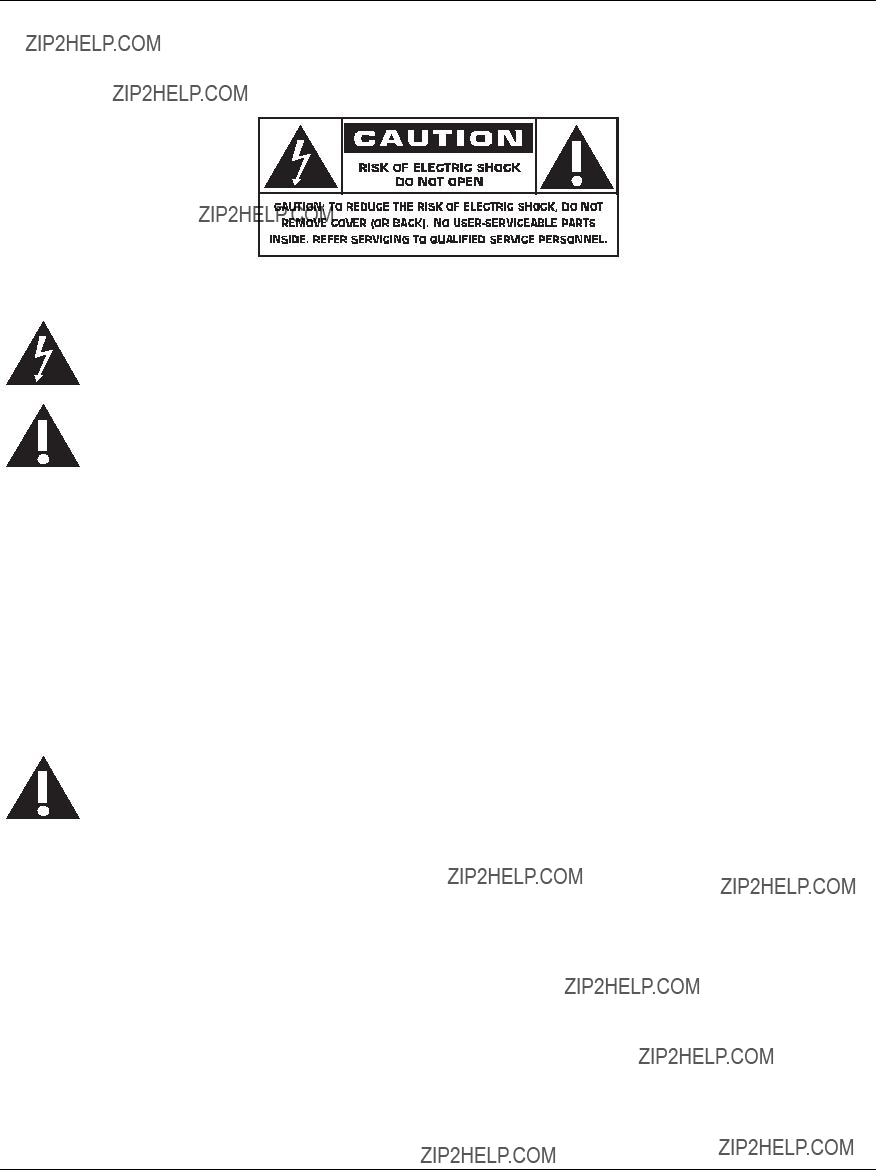
BDL3245E / BDL4245E / BDL4645E
Safety Instructions
Warnings and Precautions
KNOW THESE SAFETY SYMBOLS
CAUTION: TO REDUCE THE RISK OF ELECTRIC SHOCK, DO NOT REMOVE COVER (OR BACK). NO USER SERVICEABLE PARTS INSIDE.
REFER SERVICING TO QUALIFIED SERVICE PERSONNEL.
This symbol indicates high voltage is present inside. It is dangerous to make any kind of contact with any inside part of this product.
This symbol alerts you that important literature concerning operation and maintenance has been included with this product.
Note to CATV system installer:This reminder is provided to call CATV system installer???s attention to Article
54 of Canadian Electrical Code, Part I), that provides guidelines for proper grounding and, in particular, specifies that the cable ground shall be connected to the grounding system of the building as close to the point of cable entry as practical.
CAUTION: FCC/CSA regulations state that any unauthorized changes or modifications to this equipment may void the user???s authority to operate it.
CAUTION: To prevent electric shock, match the wide blade of plug to the wide slot, and fully insert the plug.
IMPORTANT: One Federal Court has held that unauthorized recording of copyrighted TV programs is an infringement of U.S. copyright laws. Certain Canadian programs may also be copyrighted and any unauthorized recording in whole or in part may be in violation of these rights.
TO PREVENT DAMAGE WHICH MAY RESULT IN FIRE OR ELECTRIC SHOCK HAZARD, DO NOT EXPOSE THIS APPLIANCE TO RAIN OR
MOISTURE.
The
Read and follow these instructions when connecting and using your Public Information Display:
???Unplug the display if you are not going to use it for an extensive period of time.
???Unplug the display if you need to clean it with a slightly damp cloth.The screen many be wiped with a dry cloth when the power is off. However, never use alcohol, solvents or
???Consult a service technician if the display does not operate normally when you have followed the instructions in this manual.
???The casing cover should be opened only by qualified service personnel.
???Keep the display out of direct sunlight and away from stoves or any other heat source.
???Remove any object that could fall into the vents or prevent proper cooling of the display???s electronics.
???Do not block the ventilation holes on the cabinet.
???Keep the display dry.To avoid electric shock, do not expose it to rain or excessive moisture.
???If turning off the display by detaching power cable or DC power cord, wait for 6 seconds before attach the power cable or DC power cord for normal operation.
???To avoid the risk of shock or permanent damage to the set do not expose the display to rain or excessive moisture.
???When positioning the display, make sure the power plug and outlet are easily accessible.
???IMPORTANT: Always activate a screen saver program during your application. If a still image in high contrast remains on the screen for an extended period of time, it may leave an
ii
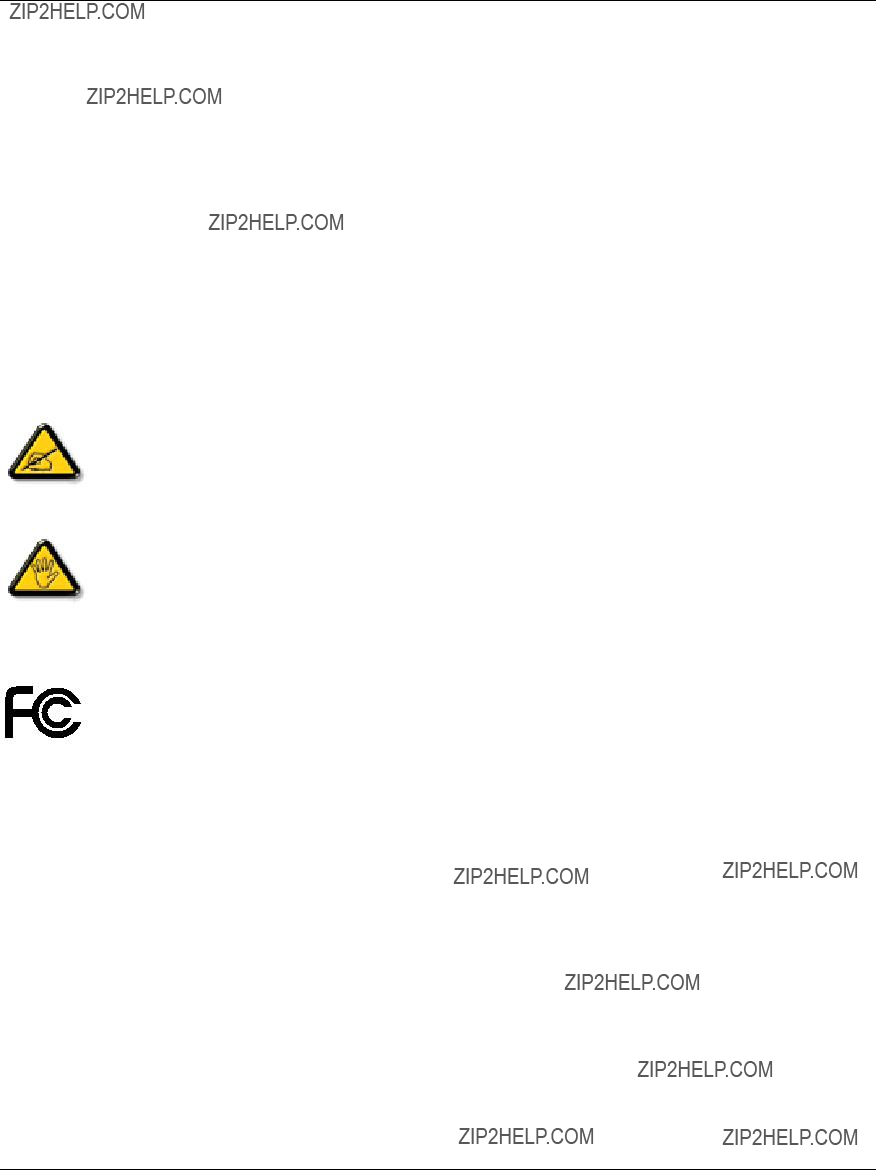
BDL3245E / BDL4245E / BDL4645E
Regulatory Information
CE Declaration of Conformity
We declare under our responsibility that the product is in conformity with the following standards:
???
???EN55022:2006+A1:2007 (Radio Disturbance requirement of Information Technology Equipment)
???EN55024:1998+A1:2001+A2:2003 (Immunity requirement of Information Technology Equipment)
???
???
???2006/95/EC (Low Voltage Directive)
???2004/108/EC (EMC Directive)
???2005/32/EC (EuP,
???93/68/EEC (Amendment of EMC and Low Voltage Directive) and is produced by a manufacturing organization on ISO9000 level.
Federal Communications Commission (FCC) Notice (U.S. Only)
This equipment has been tested and found to comply with the limits for a Class B digital device, pursuant to Part 15 of the FCC Rules.These limits are designed to provide reasonable protection against harmful interference when the equipment is operated in a commercial environment.This equipment generates, uses and can radiate radio frequency energy and, if not installed and used in accordance with the instructions manual, may cause harmful interference to radio communications. Operation of this equipment in a residential area is likely to cause harmful interference in which case the user will be required to correct the interference at his own expense.
Changes or modifications not expressly approved by the party responsible for compliance could void the user???s authority to operate the equipment.
Use only RF shielded cable that was supplied with the display when connecting this display to a computer device.
To prevent damage which may result in fire or shock hazard, do not expose this appliance to rain or excessive moisture.
THIS CLASS B DIGITAL APPARATUS MEETS ALL REQUIREMENTS OF THE CANADIAN INTERFERENCE- CAUSING EQUIPMENT REGULATIONS.
This device complies with Part 15 of the FCC Rules. Operation is subject to the following two conditions: (1) this device may not cause harmful interference, and (2) this device must accept any interference received, including interference that may cause undesired operation.
iii

BDL3245E / BDL4245E / BDL4645E
Polish Center for Testing and Certification Notice
The equipment should draw power from a socket with an attached protection circuit (a
The phasing conductor of the room???s electrical installation should have a reserve
To completely switch off the equipment, the power supply cable must be removed from the power supply socket, which should be located near the equipment and easily accessible.
A protection mark ???B??? confirms that the equipment is in compliance with the protection usage requirements of standards
Electric, Magnetic and Electronmagnetic Fields (???EMF???)
1.We manufacture and sell many products targeted at consumers, which, like any electronic apparatus, in general have the ability to emit and receive electromagnetic signals.
2.One of our leading Business Principles is to take all necessary health and safety measures for our products, to comply with all applicable legal requirements and to stay well within the EMF standards applicable at the time of producing the products.
3.We are committed to develop, produce and market products that cause no adverse health effects.
4.We confirm that if its products are handled properly for their intended use, they are safe to use according to scientific evidence available today.
5.We play an active role in the development of international EMF and safety standards, enabling us to anticipate further developments in standardization for early integration in its products.
iv

BDL3245E / BDL4245E / BDL4645E
Information for U.K. only
WARNING - THIS APPLIANCE MUST BE EARTHED.
Important:
This apparatus is supplied with an approved moulded 13A plug.To change a fuse in this type of plug proceed as follows:
1.Remove fuse cover and fuse.
2.Fit new fuse which should be a BS 1362 5A,A.S.T.A. or BSI approved type.
3.Refit the fuse cover.
If the fitted plug is not suitable for your socket outlets, it should be cut off and an appropriate
If the mains plug contains a fuse, this should have a value of 5A. If a plug without a fuse is used, the fuse at the distribution board should not be greater than 5A.
NOTE: The severed plug must be destroyed to avoid a possible shock hazard should it be inserted into a 13A socket elsewhere.
How to connect a plug
The wires in the mains lead are coloured in accordance with the following code: BLUE - ???NEUTRAL??? (???N???)
BROWN - ???LIVE??? (???L???)
GREEN & YELLOW - ???EARTH??? (???E???)
1. The GREEN & YELLOW wire must be connected to the terminal in the plug which is marked with the letter ???E??? or by the Earth symbol or coloured GREEN or GREEN & YELLOW.
2.The BLUE wire must be connected to the terminal which is marked with the letter ???N??? or coloured
BLACK.
3.The BROWN wire must be connected to the terminal which marked with the letter ???L??? or coloured RED.
Before replacing the plug cover, make certain that the cord grip is clamped over the sheath of the lead - not simply over the three wires.
v
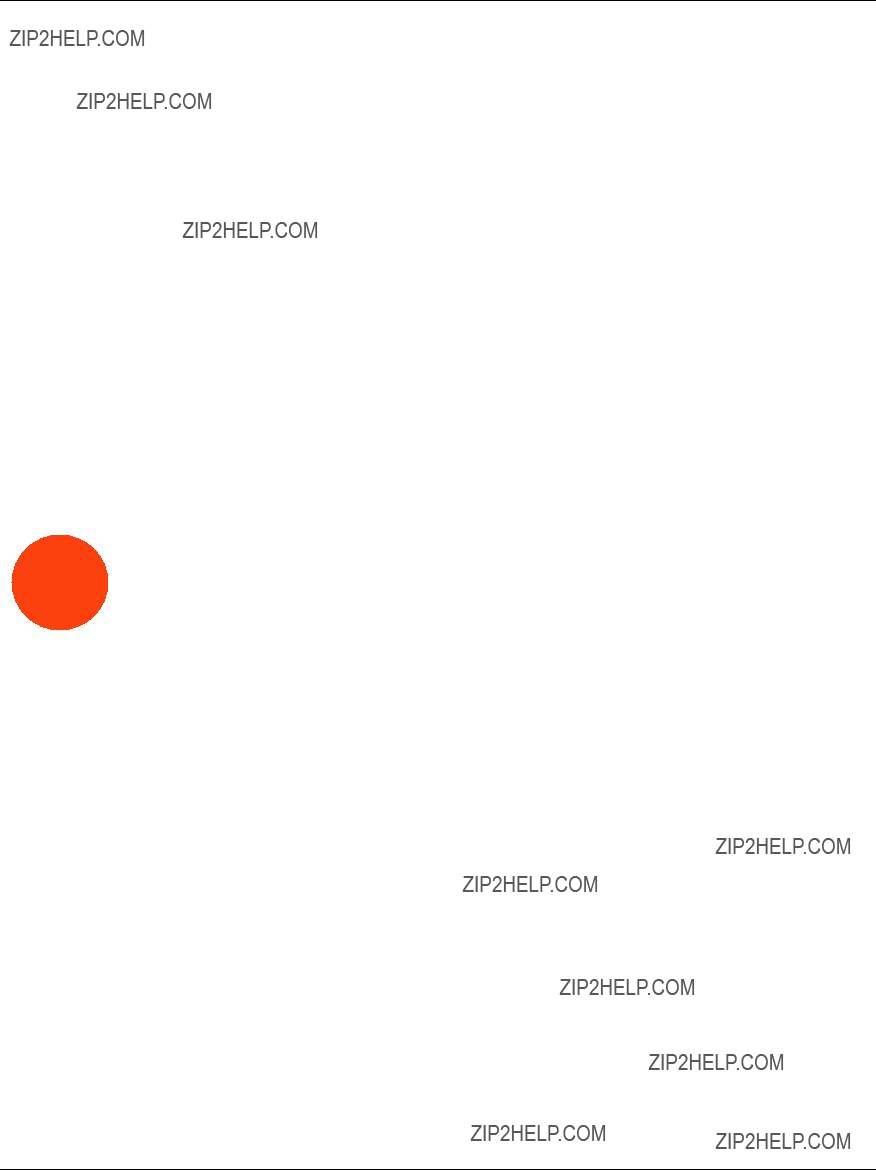
BDL3245E / BDL4245E / BDL4645E
China RoHS
???????????????????????????????????????????????? (??????RoHS??????????????????) ???????????????????????????????????? ??????????????????
O: ???????????????????????????????????????????????????????????????????????????
X: ????????????????????????????????????????????????????????????????????????????????????
 10
10
??????????????????
??????????????????(??????)?????????????????????????????????????????????????????????????????????????????????????????????????????????????????? ?????????????????????????????????????????????????????????????????????????????????????????????????????????????????????????????????????????????
????????????????????????
???????????????????????????????????????????????????????????????????????????????????????
??????????????????????????????????????????????????? http://www.energylabel.gov.cn/
vi
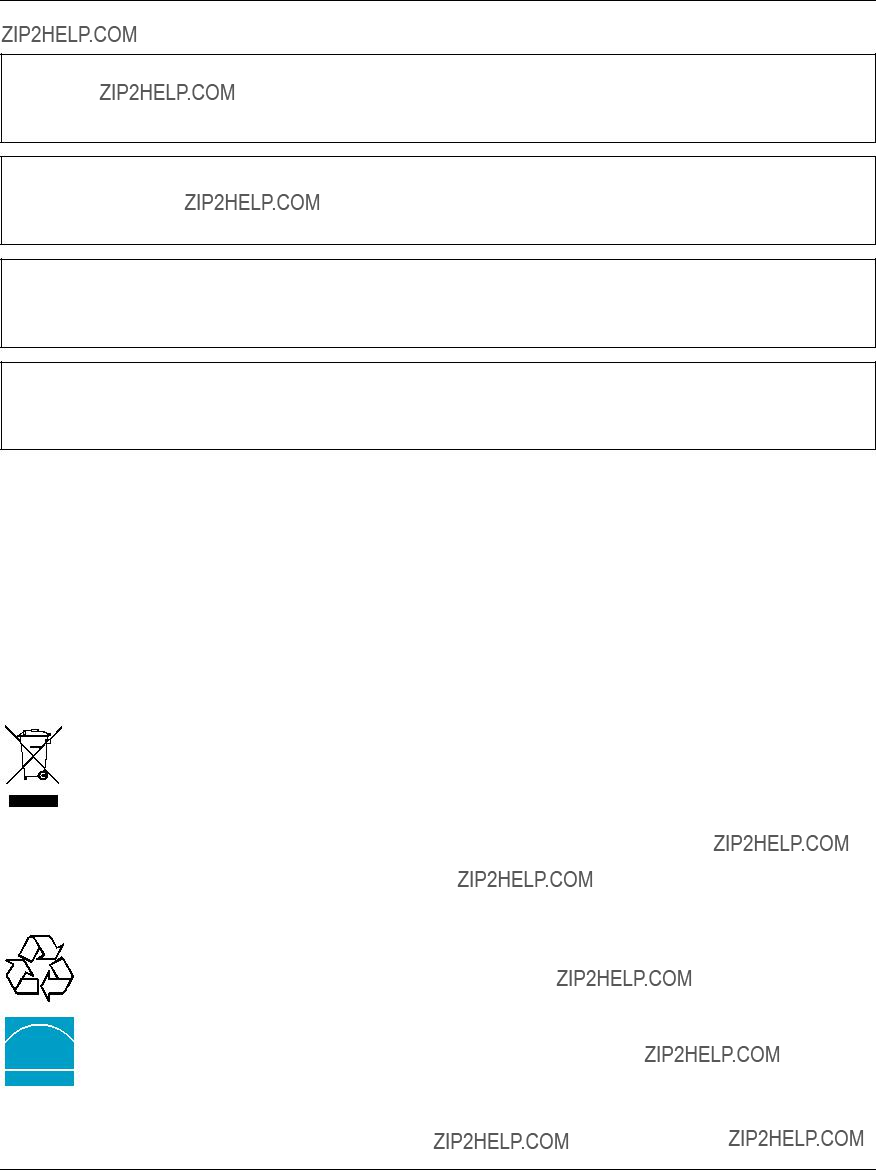
BDL3245E / BDL4245E / BDL4645E
North Europe (Nordic Countries) Information
Placering/Ventilation
VARNING:
F??RS??KRA DIG OM ATT HUVUDBRYTARE OCH UTTAG ??R L??T??TKOMLIGA, N??R DU ST??LLER DIN UTRUSTNING P??PLATS.
Placering/Ventilation
ADVARSEL:
S??RG VED PLACERINGEN FOR, AT NETLEDNINGENS STIK OG STIKKONTAKT ER NEMT TILG??NGELIGE.
Paikka/Ilmankierto
VAROITUS:
SIJOITA LAITE SITEN, ETT?? VERKKOJOHTO VOIDAAN TARVITTAESSA HELPOSTI IRROTTAA PISTORASIASTA.
Plassering/Ventilasjon
ADVARSEL:
N??R DETTE UTSTYRET PLASSERES, M?? DU PASSE P?? AT KONTAKTENE FOR ST??MTILF??RSEL ER LETTE ?? N??.
Your new Public Information Display contains materials that can be recycled and reused. Specialized companies can recycle your product to increase the amount of reusable materials and to minimize the amount to be disposed of.
Please find out about the local regulations on how to dispose of your old display from your local Philips dealer.
(For customers in Canada and U.S.A.)
This product may contain lead and/or mercury. Dispose of in accordance to
Waste Electrical and Electronie
Attention users in European Union private households
This marking on the product or on its packaging illustrates that, under European Directive 2002/96/EG governing used electrical and electronic appliances, this product may not be disposed of with normal household waste.You are responsible for disposal of this
equipment through a designated waste electrical and electronic equipment collection.To determine the locations for dropping off such waste electrical and electronic, contact your local government office, the waste disposal organization that serves your household or the store at which you purchased the product.
Attention users in United States:
Like all LCD products, this set contains a lamp with Mercury. Please dispose of according to all Local, State and Federal Laws. For the disposal or recycling information, contact: www.mygreenelectronics.com or www.eiae.org.
End of Life
Your new Public Information Display contains several materials that can be recycled for new users.
Like all LCD produces, this set contains a lamp with Mercury. Please dispose of according to all Local, State, and Federal laws.
As an ENERGY STAR Partner, we have determined that this product meets the ENERGY STAR guidelines for energy efficiency.
vii
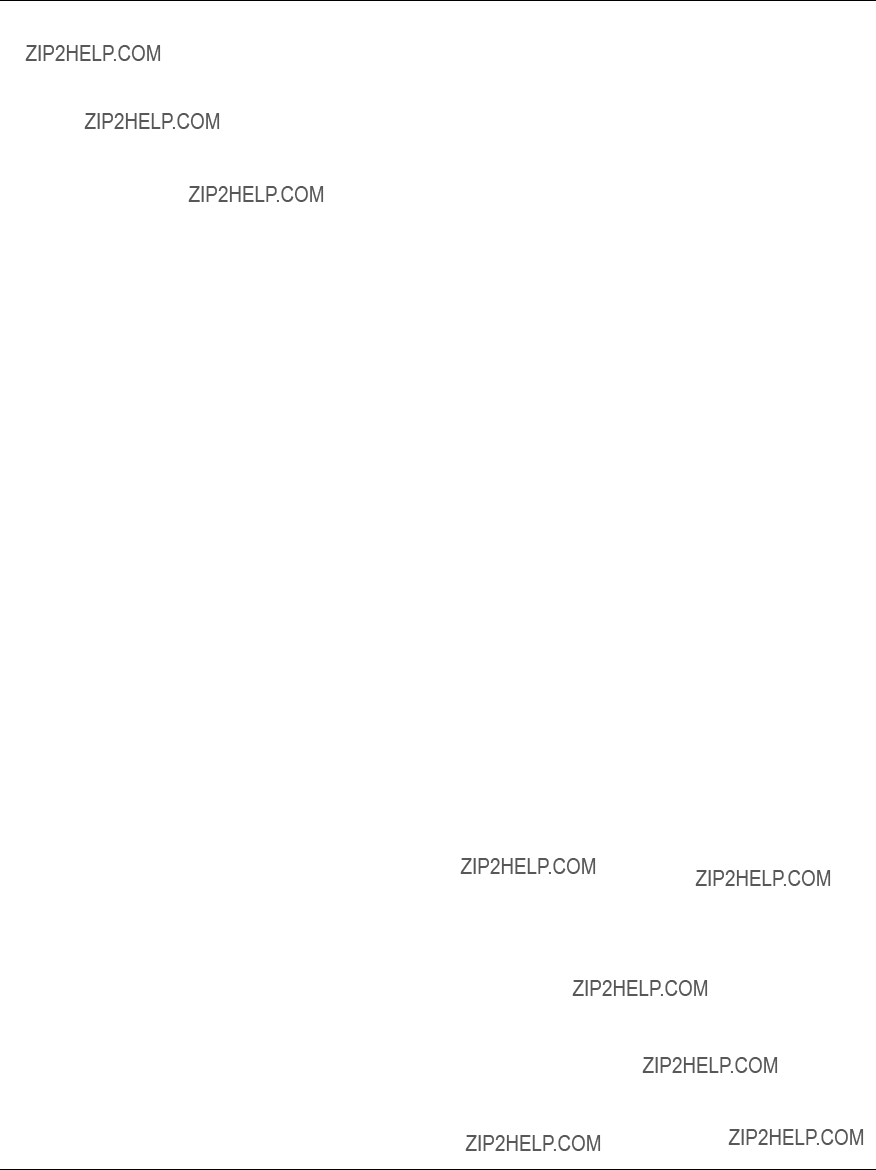
BDL3245E / BDL4245E / BDL4645E
1.4.Installing and Removing Table Stands
3.2.Connecting External Equipment (DVD/
3.5.Connecting Multiple Displays in a Daisy-
6.2.Types of Pixel Defects + Dot Definition.24
viii

BDL3245E / BDL4245E / BDL4645E
1.Unpacking and Installation
1.1.Unpacking
???This product is packed in a carton, together with the standard accessories.
???Any other optional accessories will be packed separately.
???Due to the size and weight of this display it is recommended for two people to move it.
???After opening the carton, ensure that the contents are complete and in good condition.
1.2.Package Contents
Please verify that you received the following items with your package content:
??? LCD display
??? CD ROM
???Remote control with AAA batteries
???Power cord (1.8 m)
???VGA cable (1.8 m)
???Quick Installation Guide
??? Power switch cover
???Screw for Power switch cover (M3x8)
???
Screw for Power switch cover
NOTES:
???Please make sure that for all other regions, apply a power cord that conforms to the AC voltage of the power socket and has been approved by and complies with the safety regulations of the particular country.
???You might like to save the package box and packing material for shipping the display.
1.3.Installation Notes
???Due to the high power consumption, always use the plug exclusively designed for this product. If an extended line is required, please consult your service agent.
???The product should be installed on a flat surface to avoid tipping.The distance between the back of the product and the wall should be maintained
for proper ventilation. Avoid installing the product in the kitchen, bathroom or any other places with high humidity so as not to shorten the service life of the electronic components.
???The product can normally operate only under 3000m in altitude. In installations at altitudes above 3000m, some abnormalities may be experienced.
1

BDL3245E / BDL4245E / BDL4645E
1.4.Installing and Removing Table Stands (optional)
To install table stands:
1.Power off the display.
2.Spread a protective sheet on a flat surface.
3.Grab the carrying handles and place the display
4.After inserting the stand in the guide block, tighten the screws on both sides of the display. NOTE: The longer side of the stand should face the front of the display.
Carrying handle
Thumbscrews
Longer portions face the front
Table stand
To remove table stands:
1.Power off the display.
2.Spread a protective sheet on a flat surface.
3.Grab the carrying handles and place the display
4.Remove screws using a screwdriver and place them in a safe place for reuse.
2
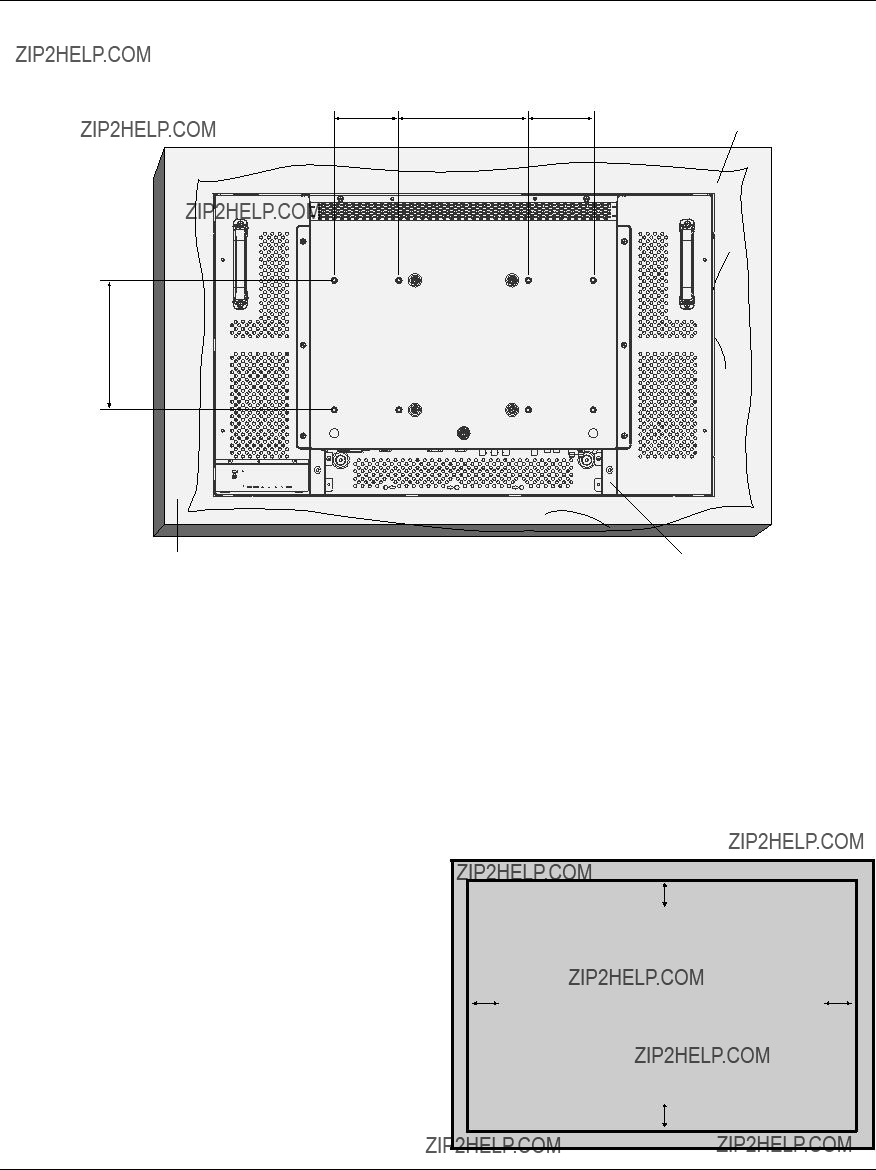
BDL3245E / BDL4245E / BDL4645E
1.5.Mounting on a Wall
To mount this display to a wall, you will have to obtain a standard
1.Lay a protective sheet on a table, which was wrapped around the display when it was packaged, beneath the screen surface so as not to scratch the screen face.
2.Ensure you have all accessories for mounting this display (wall mount, ceiling mount, table stand, etc).
3.Follow the instructions that come with the base mounting kit. Failure to follow correct mounting procedures could result in damage to the equipment or injury to the user or installer. Product warranty does not cover damage caused by improper installation.
4.For the
Caution:
To prevent the display from falling:
???For wall or ceiling installation, we recommend installing the display with metal brackets which are commercially available. For detailed installation instructions, refer to the guide received with the respective bracket.
???To lessen the probability of injury and damage resulting from fall of the display in case of earthquake or other natural disaster, be sure to consult the bracket manufacturer for installation location.
Ventilation Requirements for enclosure locating
To allow heat to disperse, leave space between surrounding objects as shown in the diagram below.
3

BDL3245E / BDL4245E / BDL4645E
1.6.Mounting in Portrait Position
This display can be installed in portrait position.
1.Remove the table stand, if attached.
2.Rotate 90 degrees clockwise.The ???




 ??? logo should be on the LEFT side when facing the display.
??? logo should be on the LEFT side when facing the display.
1.6.1. How to use the logo guider for portrait position
2.Peel off the protective film at the back of the ???




 ??? logo sticker. Hold and press the guider with your left hand. Put the ???
??? logo sticker. Hold and press the guider with your left hand. Put the ???




 ??? logo
??? logo
sticker with its adhesive side down into the logo hole with your right hand, and press to make it stick tightly onto the front bezel.
3. Remove the guider.
1.6.2. How to remove the logo
2. Using a knife, carefully remove the logo sticker with the paper placing beneath.
3. Tear off the logo sticker.
NOTE: When installing the display on a wall, please consult a professional technician for proper installation.We accept no liability for installations not performed by a professional technician.
4

BDL3245E / BDL4245E / BDL4645E
2.Parts and Functions
2.1.Control Panel
9
3INPUT button
???Use this button to select the input source.
???When the On Screen Display menu is active, this is also used as the [SET] button.
4[ ] button
] button
Increase the adjustment while OSD menu is on, or increase the audio output level while OSD menu is off.
5[ ] button
Decrease the adjustment while OSD menu is on, or decrease the audio output level while OSD menu is off.
9Remote control sensor and power status indicator
???Receives command signals from the remote control.
???Indicates the operating status of the display:
6[ ] button
] button
Move the highlight bar up to adjust the selected item while OSD menu is on.
7[ ] button
] button
Move the highlight bar down to adjust the selected item while OSD menu is on.
8MENU button
Return to previous menu while OSD menu is on, or to activate the OSD menu when OSD menu is off.
5

BDL3245E / BDL4245E / BDL4645E
2.2.Input/Output Terminals
1MAIN POWER SWITCH
Press to switch the main power on/off.
2AC IN
Connect the supplied power cord to the wall outlet.
10AUDIO IN 1, 2, 3
Connect audio input from external AV device.
???AUDIO IN 1: 3.5mm stereo phone jack
???AUDIO IN 2, 3: RCA phone jack
3RS232C (OUT/IN)
RS232C network input/output connection for the use of loop- through function.
4
LAN control function for the use of remote control signal from control center.
5VGA OUT
Output the VGA signal from the VGA IN
11VIDEO IN/OUT
???
???VIDEO IN (BNC): Connect the composite video signal input.
???VIDEO OUT (BNC): Connect the composite video signal output from VIDEO IN (BNC).
12AUDIO OUT R/L (RCA)
Connect the audio signal output from AUDIO IN 1, 2, or 3 jack to an external AV device.
6
Connect the
7HDMI IN
Connect the HDMI output of an AV device, or the
8VGA IN
Connect the computer VGA output.
9COMPONENT IN (BNC)
Connect the component YPbPr output from external AV device.
13SPEAKERS OUT R/L
Connect the audio output to external speakers.
14SPEAKER SWITCH
Press to switch the internal speaker on/off.
15KENSINGTON LOCK
For security and theft prevention.
16OPS SLOT
Slot for installing the optional OPS module.
6
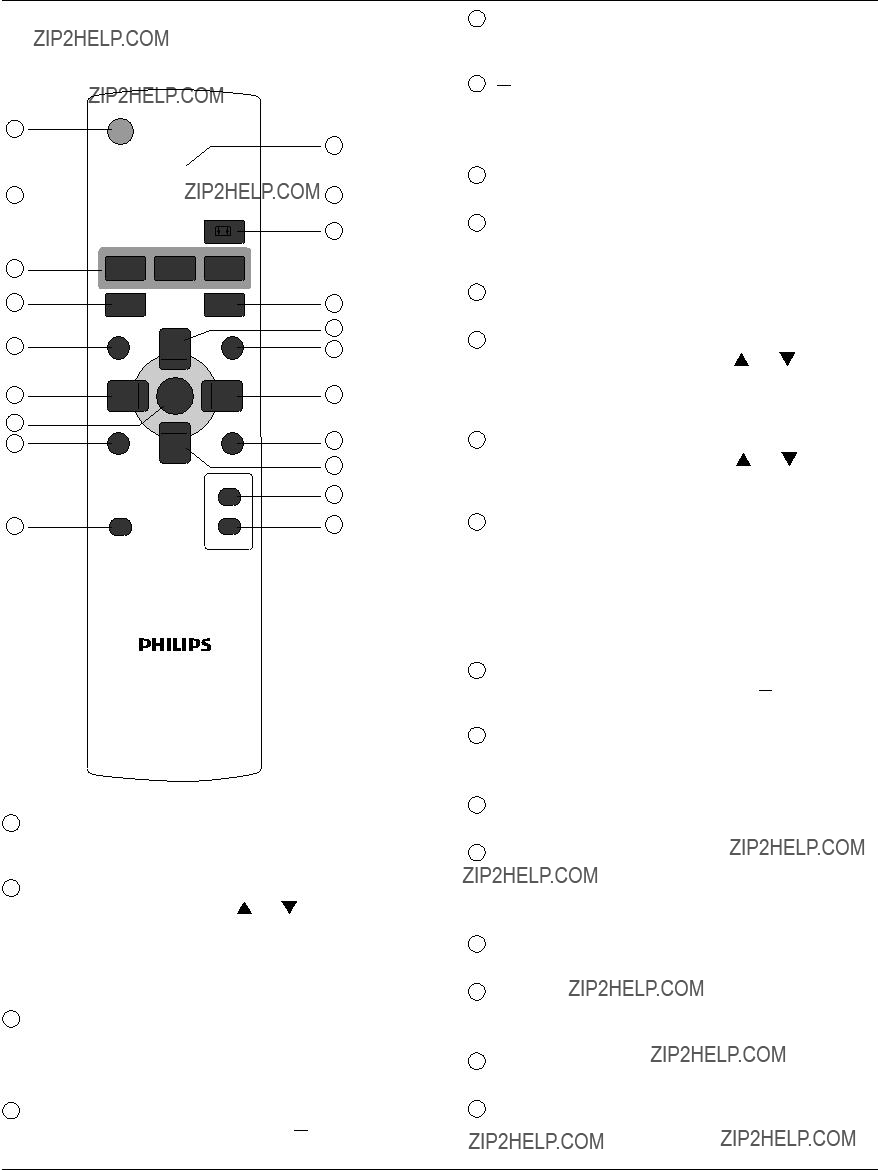
BDL3245E / BDL4245E / BDL4645E
2.3.Remote Control
2.3.1. General functions
POWER
1
10
VIDEO AUDIO
SMART SOURCE SOURCE
2 


 11
11
VOL DOWN
1[POWER] button
Press to switch on the display from standby mode. Press again to turn it off and back into standby mode.
2[SMART] button
Press to activate Smart Menu. Press [ ] or [ ] button to select menu options. Press [SET] button to confirm and exit the selection.
???Standard: Used for normal images (factory setting)
???Highbright: Used for moving image such as Video
???sRGB: Used for text based images
3[PIP] (Picture In Picture) button
[ON/OFF]: Turn PIP mode ON/OFF.
[INPUT]: Select the input signal for the
[CHANGE]: Toggle between the main picture and sub picture.
4[CONTRAST] button
Press to activate Contrast Menu. Press [ ] or [ ] button to adjust the value. Press [MENU] button to confirm and exit.
] or [ ] button to adjust the value. Press [MENU] button to confirm and exit.
5[DISPLAY] button
Press to turn on/off the information OSD displayed on the upper right corner of the screen.
6 [ ] button
???Press to move the selection left in OSD menu.
???Press to decrease the value in OSD menu.
???Press to move the
7[SET] button
Press to activate the setting inside the OSD menu.
8[AUTO ADJUST] button
Press to run the Auto Adjust function.
NOTE: This button is functional for VGA input only.
9[MUTE] button
Press to turn the mute function on/off.
10 [VIDEO SOURCE] button
Press to toggle Video Source Menu. Press [ ] or [ ] button to select one of the video sources among HDMI,
Component,
11 [AUDIO SOURCE] button
Press to toggle Audio Source Menu. Press [ ] or [ ] button to select one of the audio sources among HDMI, AUDIO1,
AUDIO2, or AUDIO3. Press [SET] button to confirm and exit.
12Picture Format button 
Press to switch screen aspect ratio.
???For PC signal: FULL, NORMAL, CUSTOM, and REAL.
???For Video signal: FULL, NORMAL, DYNAMIC, CUSTOM, REAL, and 21:9.
NOTE:This button is not functional when the pixel shift function is active.
13 [BRIGHTNESS] button
Press to toggle Brightness Menu. Press [ ] or [ ] button to adjust the value. Press [MENU] button to confirm and exit.
] or [ ] button to adjust the value. Press [MENU] button to confirm and exit.
14[ ] button
] button
???Press to move the selection up in OSD menu.
???Press to move the
15[MENU] button
Press to turn the OSD menu on/off.
16[ ] button
] button
???Press to move the selection right in OSD menu.
???Press to increase the value in OSD menu.
???Press to move the
17[EXIT] button
Press to turn back to the previous OSD menu.
18[ ] button
] button
???Press to move the selection down in OSD menu.
???Press to move the
19[VOL UP] button
Press to increase the audio output level.
20[VOL DOWN] button
Press to decrease the audio output level.
7
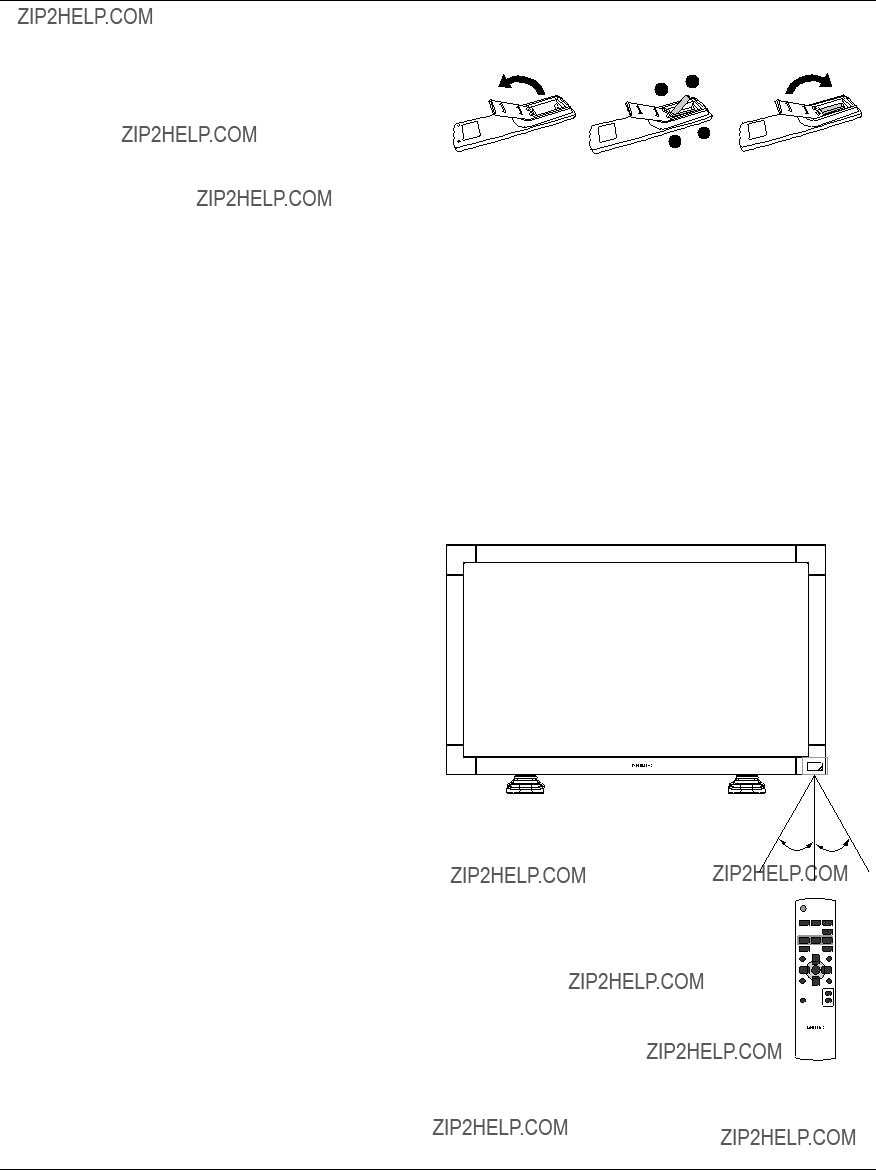
BDL3245E / BDL4245E / BDL4645E
2.3.2. Inserting the batteries in the remote control
The remote control is powered by two 1.5V AAA batteries.
To install or replace batteries:
1. Press and then slide the cover to open it.
2. Align the batteries according to the (+) and
3. Replace the cover.
Caution:
The incorrect use of batteries can result in leaks or bursting. Be sure to follow these instructions:
???Place ???AAA??? batteries matching the (+) and
???Do not mix battery types.
???Do not combine new batteries with used ones. It causes shorter life or leakage of batteries.
???Remove the dead batteries immediately to prevent them from liquid leaking in the battery compartment. Don???t touch exposed battery acid, as it can damage your skin.
NOTE: If you do not intend to use the remote control for a long period, remove the batteries.
2.3.3. Handling the remote control
???Do not subject to strong shock.
??? Do not allow water or other liquid to splash the remote control. If the remote control gets wet, wipe it dry immediately.
???Avoid exposure to heat and steam.
???Other than to install the batteries, do not open the remote control.
2.3.4. Operating range of the remote control
Point the top of the remote control toward the display???s remote control sensor when pressing a button.
Use the remote control within a distance of less than 10m/33ft from the display???s sensor, and a horizontal and vertical angle of less than 30 degrees.
NOTE: The remote control may not function properly when the remote control sensor on the display is under direct sunlight or strong illumination, or when there is an obstacle in the path of signal transmission.
30 30
30
POWER
VIDEO AUDIO
SMART SOURCE SOURCE
8

BDL3245E / BDL4245E / BDL4645E
3.Connecting External Equipment
3.1.Using the Switch Cover
A cover for the power switch is provided to prevent the display from being turned on or off accidentally.
To lock the cover into position:
1.Align and insert the cover to the indentation located beside the power switch.
2.Use the screw to lock the cover.
9

BDL3245E / BDL4245E / BDL4645E
3.2.Connecting External Equipment (DVD/VCR/VCD)
3.2.1. Using COMPONENT video input
COMPONENT (YPbPr)
Audio Output
DVD / VCR / VCD
3.2.2. Using HDMI video input
DVD / VCR / VCD
HDMI connector
10
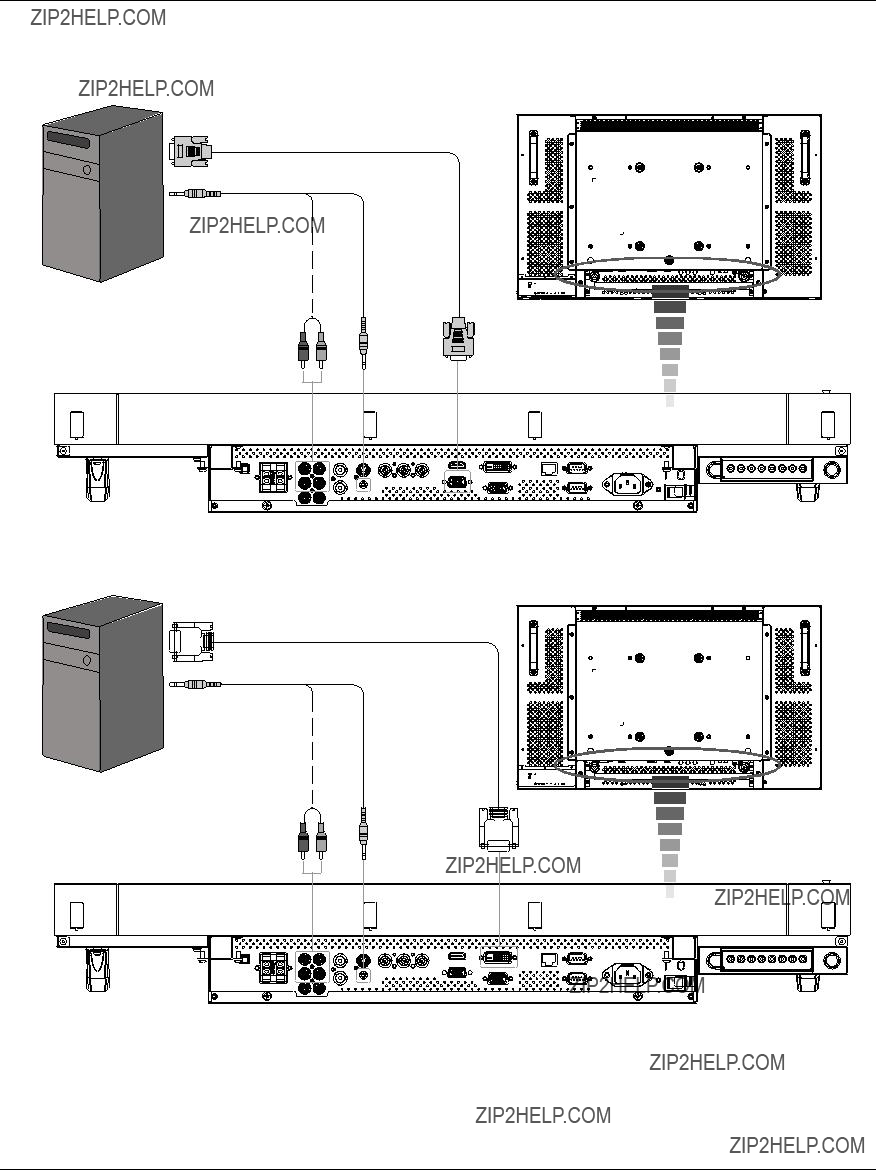
BDL3245E / BDL4245E / BDL4645E
3.3.Connecting a PC
3.3.1. Using VGA input
From analog VGA output
Mini
From audio output
PC or IBM compatible
11
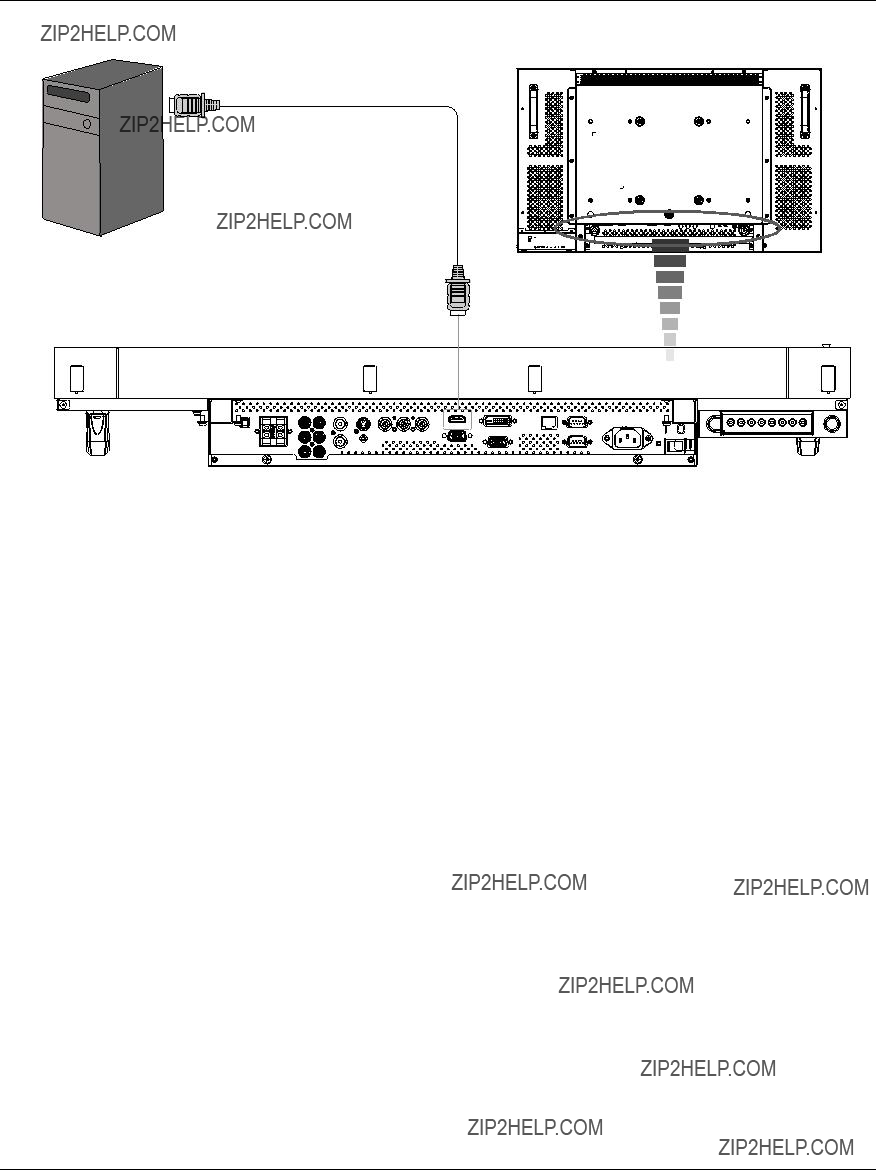
BDL3245E / BDL4245E / BDL4645E
3.3.3. Using HDMI input
From HDMI output
PC or IBM compatible
12
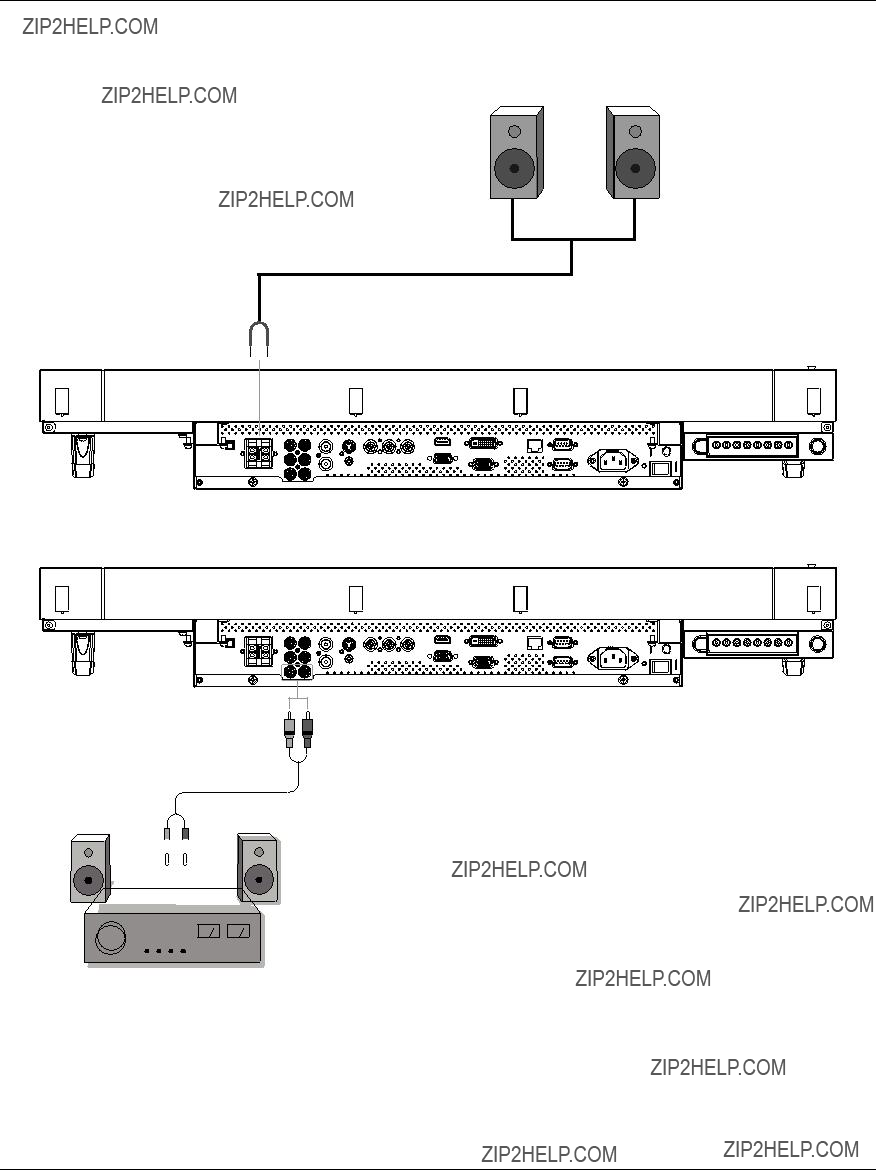
BDL3245E / BDL4245E / BDL4645E
3.4.External Audio Connection
3.4.1. Connecting external speakers
External speaker
3.4.2. Connecting an external audio device
To [AUDIO OUT]
RCA 

Audio In
Stereo Amplifier
13
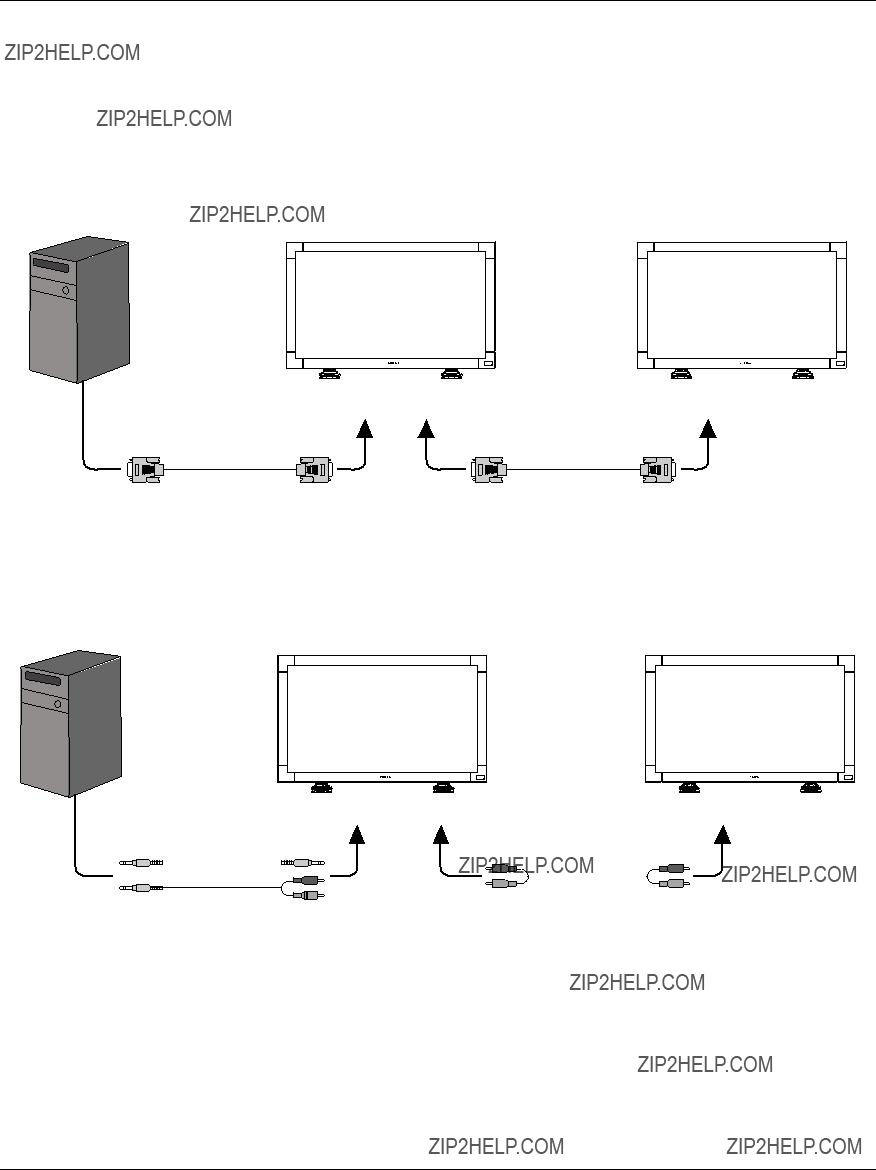
BDL3245E / BDL4245E / BDL4645E
3.5.Connecting Multiple Displays in a
You can interconnect multiple displays to create a
3.5.1. Video connection
Connect one of the following connections:
???Connect the [RS232C OUT] connector of display 1 to the [RS232C IN] connector of display 2.
???Connect the [VGA OUT] connector of display 1 to the [VGA IN] connector of display 2.
???Connect the [VIDEO OUT] connector of display 1 to the [VIDEO IN] connector of display 2.
3.5.2. Audio connection
Do one the following connections:
???Connect the [AUDIO OUT] connector of display 1 to the [AUDIO IN 2] OR [AUDIO IN 3] connector of display 2.
???Connect the [VGA OUT] connector of display 1 to the [VGA IN] connector of display 2.
???Connect the [VIDEO OUT] connector of display 1 to the [VIDEO IN] connector of display 2.
14
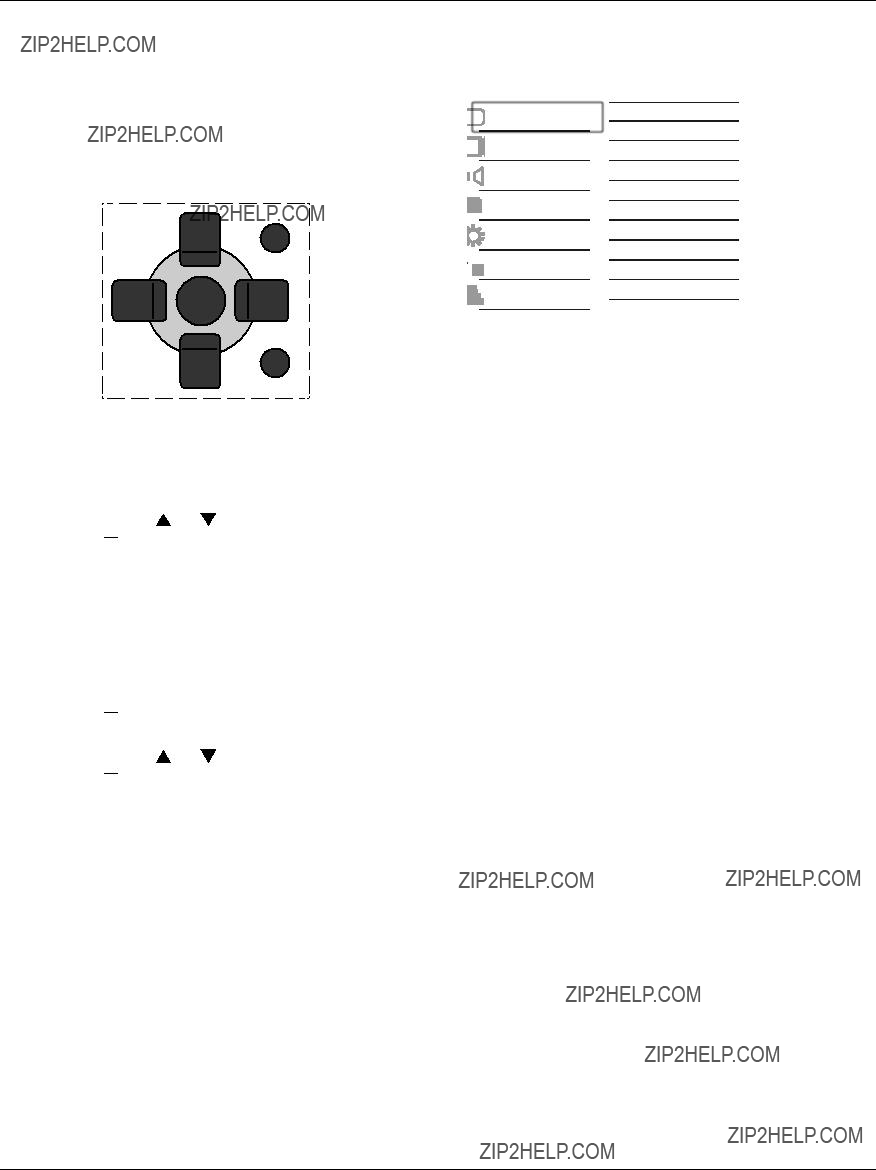
BDL3245E / BDL4245E / BDL4645E
4.OSD Menu
An overall view of the
4.1.Navigating the OSD Menu
4.1.1.Navigating the OSD menu using the remote control
MENU
SET
EXIT
1.Press [MENU] button on the remote control to display the OSD menu.
2.Press [ ] or [
] or [ ] button to choose the item you want to adjust.
] button to choose the item you want to adjust.
3.Press [SET] or [ ] or button to enter the submenu.
] or button to enter the submenu.
4. In the submenu, press [ ] or [ ] button to toggle among items, press [ ] or [ ] button to adjust settings. If there is a submenu,
] or [ ] button to adjust settings. If there is a submenu,
press [SET] or [ ] button to enter the submenu.
] button to enter the submenu.
5.Press [EXIT] button to return to the previous menu, or press [MENU] button to exit the OSD menu.
4.1.2.Navigating the OSD menu using the display???s control buttons
1. Press [MENU] button to display the OSD menu.
2. Press [ ] or [ ] button to choose the item you want to adjust.
] or [ ] button to choose the item you want to adjust.
3.Press [SOURCE] or [ ] button to enter the submenu.
] button to enter the submenu.
4.In the submenu, press [ ] or [ ] button to toggle among items,
press [ ] or [ ] button to adjust settings. If there is a submenu, press [SOURCE] or [
] or [ ] button to adjust settings. If there is a submenu, press [SOURCE] or [ ] button to enter the submenu.
] button to enter the submenu.
5.Press [MENU] button to return to the previous menu, or press [MENU] button several times to exit the OSD menu.
4.2.OSD Menu Overview
4.2.1. Picture menu
Brightness
Adjust the overall image brightness by changing the intensity of the LCD panel???s backlight.
Contrast
Adjust to sharpen the picture quality.The black portions of the picture become richer in darkness and the white become brighter.
Sharpness
Adjust to improve the image detail.
Black level
Adjust to change the image brightness.
Noise reduction
Adjust to remove the noise in the image.You can select a suitable noise reduction level.
The options are: {Off} / {Low} / {Medium} / {High}.
NOTE: This item is functional for HDMI(Video mode),
NOTE: This item is functional for HDMI(Video mode),
Color
Adjust to increase or decrease the intensity of colors in the image.
NOTE: This item is functional for
Color temperature
Select a color temperature for the image. A lower color temperature will have a reddish tint, whilst a higher color temperature gives off a more bluish tint.
The options are: {3000K} / {4000K} / {5000K} / {6500K} / {7500K} / {9300K} / {10000K} / {Native} / {User}.
Color control
With this function you can adjust the color tones of the image precisely by changing the R (Red), G (Green) and B (Blue) settings independently.
15
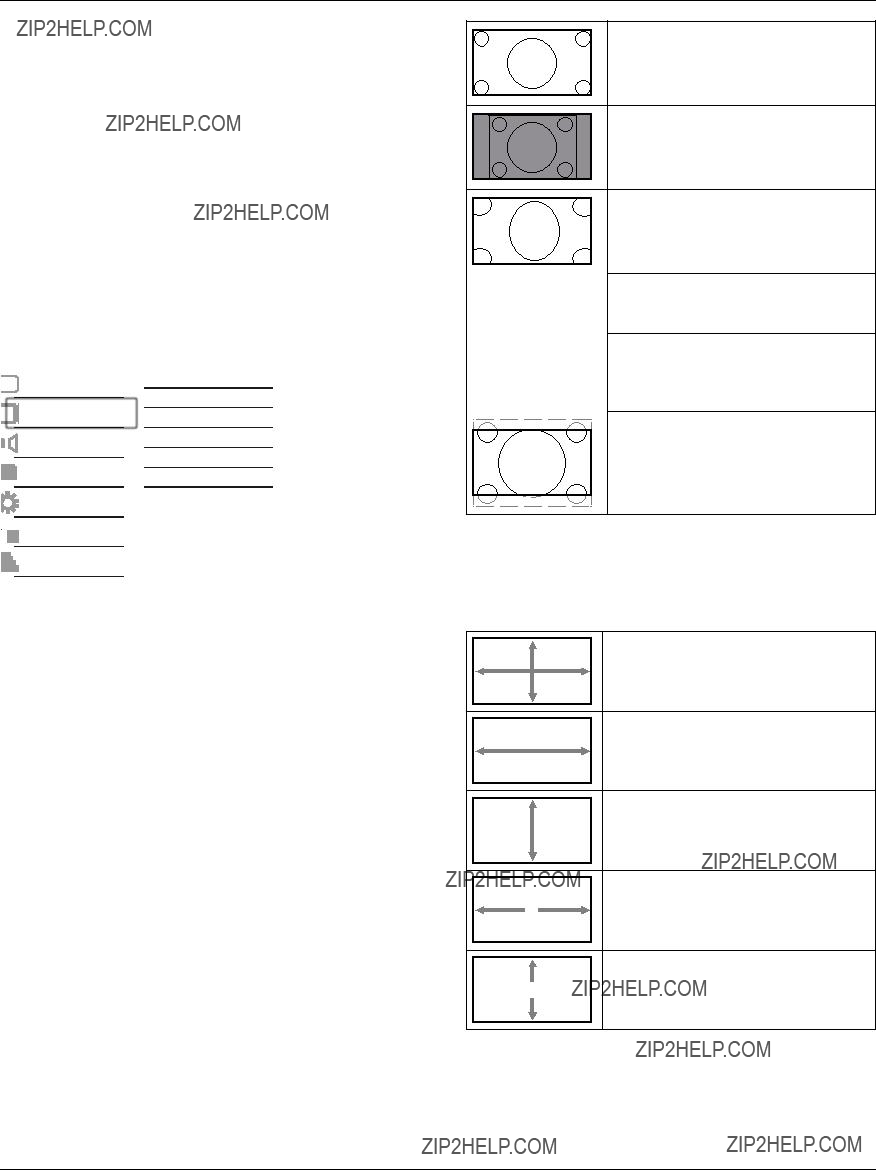
BDL3245E / BDL4245E / BDL4645E
NOTE: This item is functional only when {Color temperature} is set to {User}.
Smart contrast
When turned on, this function helps enhance image contrast when displaying dark scenes.
Smart picture
The following smart picture modes are available for:
???PC mode: {Standard} / {Highbright} / {sRGB}.
???Video mode: {Standard} / {Highbright} / {Cinema}.
Video source
Select a video input source.
Picture reset
Reset all settings in the Picture menu.
4.2.2. Screen menu
Clock
Adjust the width of the image.
NOTE: This item is functional for VGA input only.
Clock phase
Adjust to improve the focus, clarity and stability of the image. NOTE: This item is functional for VGA input only.
Zoom mode
The pictures you receive may be transmitted in 16:9 format (wide screen) or 4:3 format (conventional screen).The 16:9 pictures sometimes have a black band at the top and bottom of the screen (letterbox format).
This function allows you to optimize the picture display on screen.The following zoom modes are available for:
???PC mode: {Full} / {Normal} / {Custom} / {Real}.
???Video mode: {Full} / {Normal} / {Dynamic} / {Custom} / {Real} / {21:9}.
NOTE: If the function for pixel shift and Tiling enabled, the menu items for Zoom mode, H position,V position will be disabled.
Full
This mode restores the correct proportions of pictures transmitted in 16:9 using the full screen display.
Normal
The picture is reproduced in 4:3 format and a black band is displayed on either side of the picture.
Dynamic
Fill the entire screen by stretching 4:3 pictures
Custom
Choose to apply the custom zoom settings in the Custom Zoom submenu.
Real
This mode displays the image
21:9
The picture is enlarged to 16:9 format.This mode is recommended when displaying pictures that have black bands at the top and bottom (letterbox format).
Custom zoom
You can use this function to further customize the zoom settings to suit the image you want to display.
NOTE: This item is functional only when the Zoom mode setting is set to Custom.
Zoom
Expands the horizontal and vertical sizes of the image simultaneously.
H zoom
Expands the horizontal size of the image only.
V zoom
Expands the vertical size of the image only.
H position
Moves the horizontal position of the image left or right.
V position
Moves the vertical position of the image up or down.
Screen reset
Reset all settings in the Screen menu to factory preset values.
16
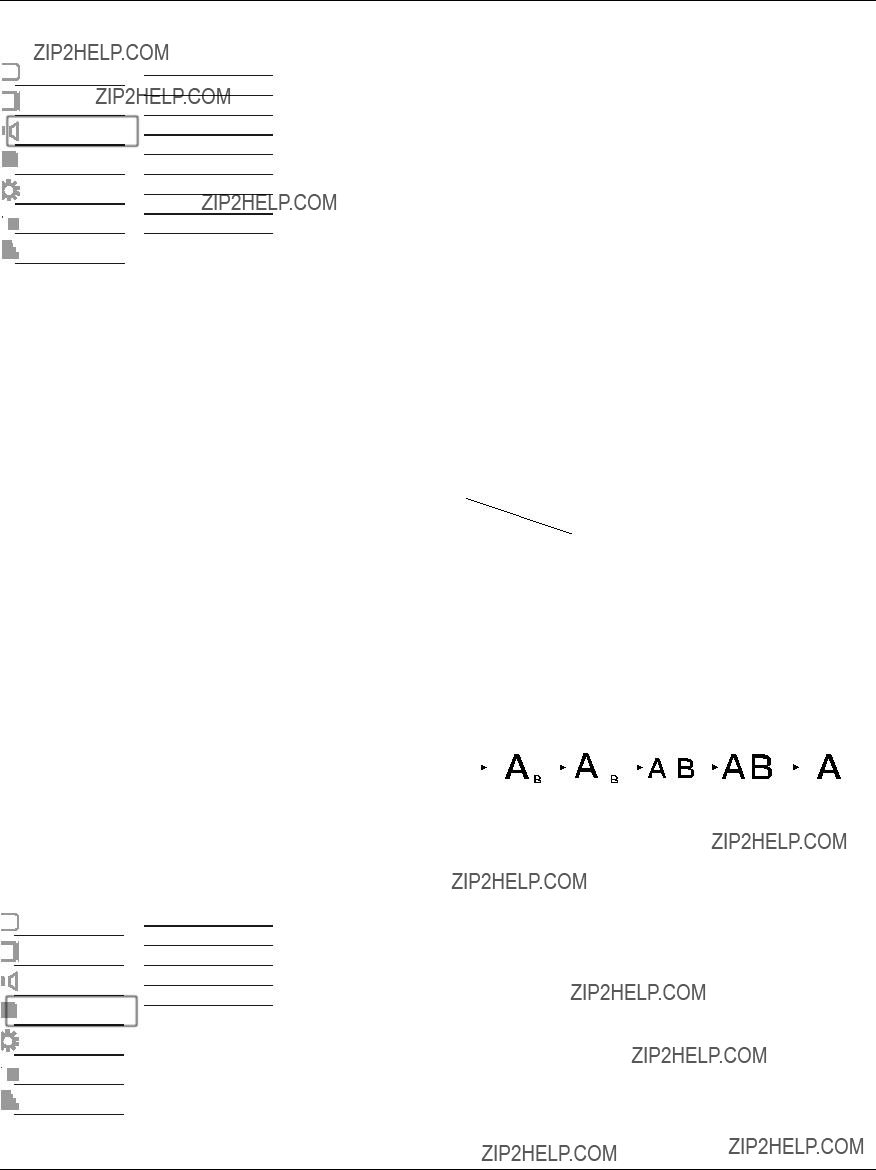
BDL3245E / BDL4245E / BDL4645E
4.2.3. Audio menu
Balance
Adjust to emphasize left or right audio output balance.
Treble
Adjust to increase or decrease
Bass
Adjust to increase or decrease
Volume
Adjust to increase or decrease the audio output level.
Maximum volume
Adjust your own limitation for the maximum volume setting.This stops the volume from being playing at too loud a level.
Minimum volume
Adjust your own limitation for the minimum volume setting.
Mute
Turn the mute function on/off.
Audio source
Select the audio input source according to the audio signal source connected to the audio input and HDMI sockets on the display.
The options are: {HDMI} / {Audio1} / {Audio2} / {Audio3}.
Audio reset
Reset all settings in the Audio menu to factory preset values.
Card OPS audio
Select the analog or digital audio mode for card OPS.
4.2.4. PIP menu
PIP
Select the PIP
The options are: {Off} / {PIP} / {POP} / {PBP aspect} / {PBP full}.
PIP input
Select the input signal for the
PIP change
Enlarges the smaller picture to become the main picture, and vice versa.
PIP size
Select the size of the sub picture in the PIP
PIP audio
Select the audio source in the PIP
???{Main} - Select audio from the main picture
???{Sub} - Select audio from the sub picture.
PIP reset
Reset all settings in the PIP menu to factory preset values.
NOTES:
???The PIP function is available only for certain signal source combinations as shown in the table below.
???The availability of the PIP function will also depend on the resolution of the input signal being used.
(O: PIP function available, X: PIP function unavailable)
By pressing the [PIP ON/OFF] button on the remote control, you can change the mode in the order shown below:
The resolutions in the PIP and POP modes are configured as follows:
17
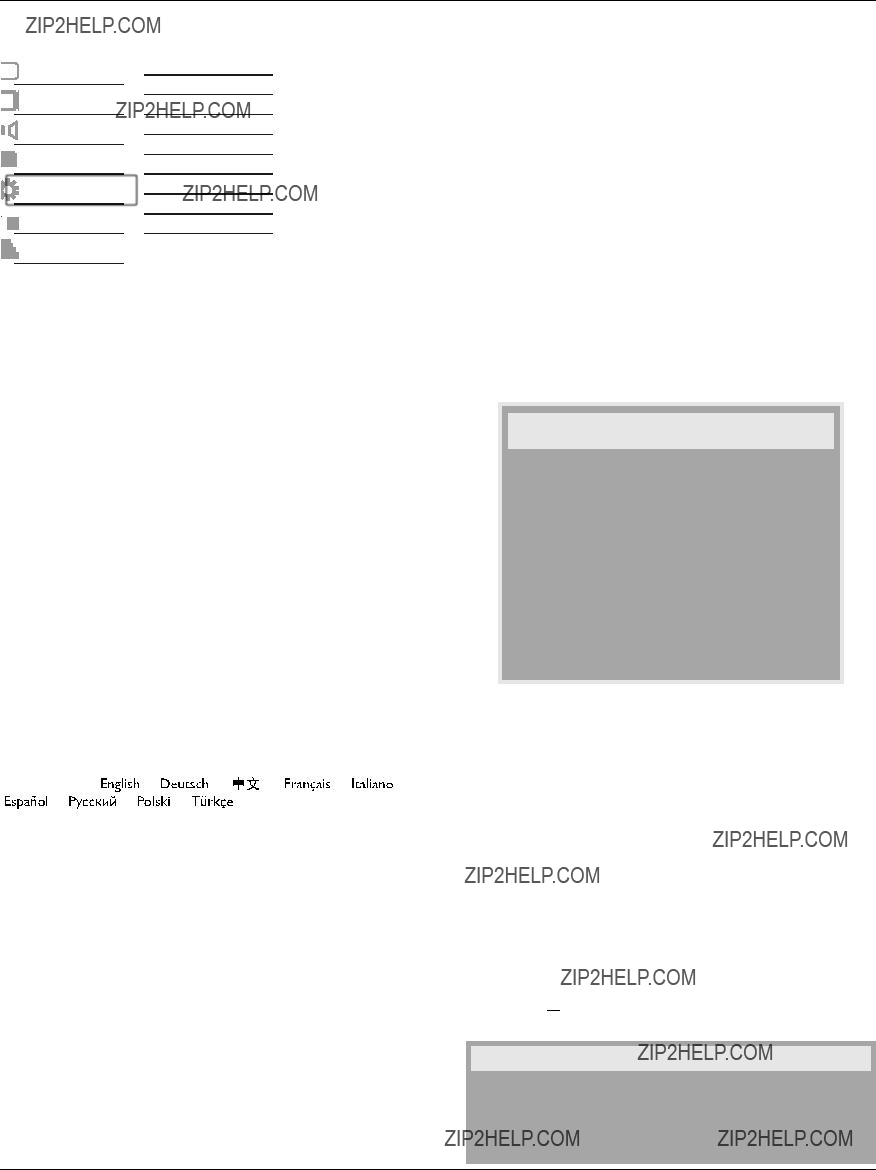
BDL3245E / BDL4245E / BDL4645E
4.2.5. Configuration1 menu
Switch on state
Select the display status used for the next powering on.
???{Power off} - The display will remain off when the power cord is connected to a wall outlet.
???{Forced on} - The display will turn on when the power cord is connected to a wall outlet.
???{Last status} - The display will return to the previous power status (on/off/standby) when removing and replacing the power cord.
Auto adjust
Use this function to let the display automatically optimize the display of VGA input image.
NOTE: This item is functional for VGA input only.
Power save
Set the display to reduce the power automatically.
???{RGB} - Select {On} to let the display enter DPMS mode when no signal detected from the HDMI Graphic mode, HDMI,
???{VIDEO} - Select {On} to let the display enter power saving mode when no signal detected from the HDMI Video mode or YPbPr inputs after three successive cycles.
Language
Select the language used in the OSD menu.
Panel saving
Choose to enable the panel saving functions to reduce the risk of the ???image persistence???.
???{Cooling Fan} - Select {On} to turn on the cooling fan all the time. Select {Auto} to turn on/off the cooling fan according to the display???s temperature.
NOTES:
???The default {Auto} option will start running the cooling fan if the temperature of 65??C (152??F) is reached, and will keep running for 30 minutes after cooling down to the temperature of 62??C (144??F).
???A
???{Brightness} - Select {On} and the brightness of the image will be reduced to an appropriate level, and the Brightness setting in the Picture menu will become unavailable.
???{Pixel shift} - Select the time interval ({Auto} / {10 ~ 900} Seconds / {Off}) for the display to slightly expand the image size and shift the position of pixels in four directions (up, down, left, or right).
NOTE: The default {Auto} setting for menu item Pixel shift does not support menu items Zoom mode, H/V Position, and PIP.
Color system
Selects the Color System depends on your input video format.
The options are: {Auto} / {NTSC} / {PAL} / {SECAM} / {4.43NTSC} /
NOTE: This item is functional for
Network control port
Select the nectwork control port.
The options are: {RS232} / {LAN(RJ45)}.
NOTE: If {LAN(RJ45)} is selected, then {RS232} will not be activated, even if a cable is attached, and vice versa.
Network settings
Assign {IP address}, {Subnet Mask}, and {Default gateway} for the display.
Network settings
change [SET] in STORE
???DHCP - Choose to enable or disable the DHCP function. If enabled, the display will be assigned IP address, Subnet mask and Default gateway automatically. If disabled, you will be prompted to enter the following value manually. Finally, press [SET] button to store and save the chosen values.
???IP address
???Subnet mask
???Default gateway
???Login user name (The default user name is {admin})
???Login password (The default password is {0000})
Configuration reset
Reset all settings in the Configuration1 menu to factory preset values.
Factory reset
Reset all the settings in the OSD menus of {Picture}, {Screen}, {Audio}, {PIP}, {Configuration1}, {Configuration2}, and {Advanced option} to factory preset values.
Press [ ] or [ ] button to select [Reset], and then press [SET] button to do the reset.
] or [ ] button to select [Reset], and then press [SET] button to do the reset.
Factory reset
18
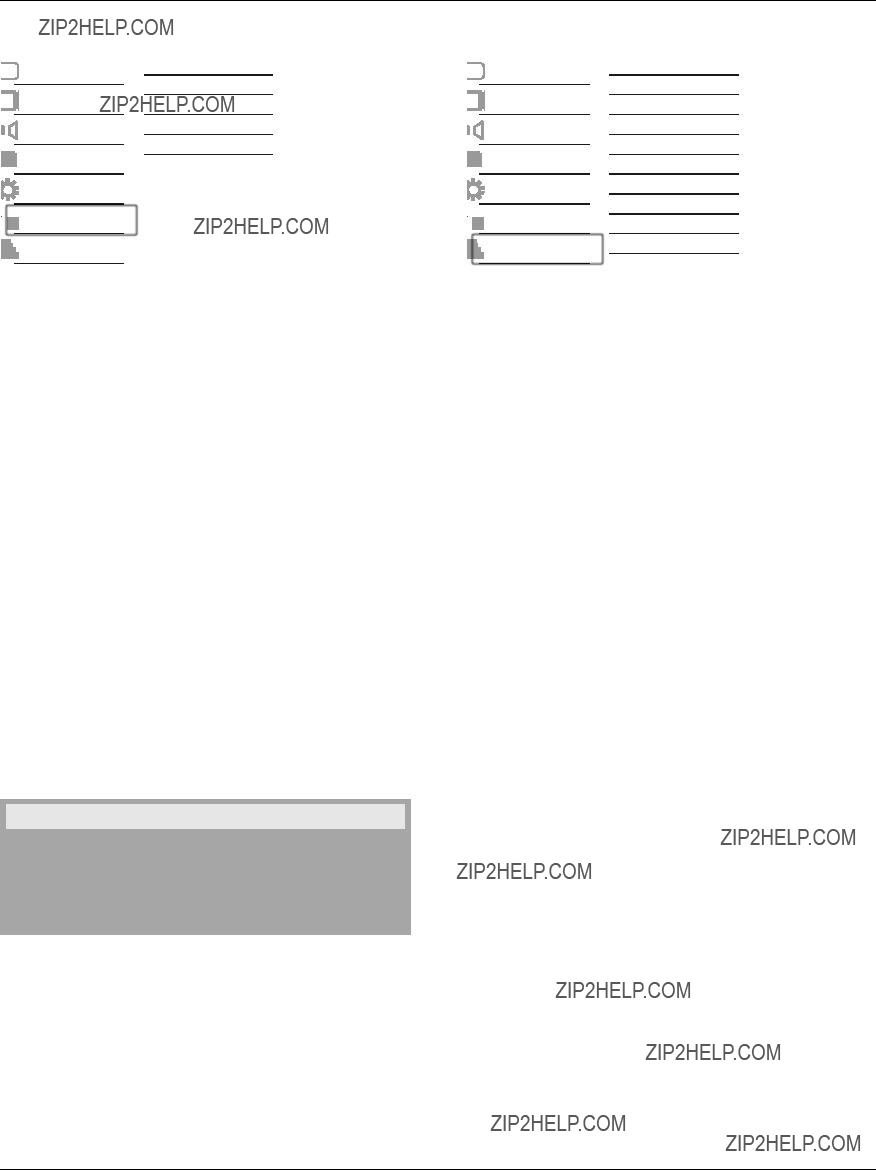
BDL3245E / BDL4245E / BDL4645E
4.2.6. Configuration2 menu
OSD turn off
Set the period of time the OSD menu stays on the screen. The options are: {5 ~ 120} seconds.
Information OSD
Set the period of time the information OSD displayed on the upper right corner of the screen.The information OSD will display when input signal is changed.
The information OSD will remain on the screen with {Off} selection. The options are: {1 ~ 60} seconds.
Off Timer
Set the display to turn itself off to standby mode within an amount of time specified.
The options are: {Off, 1 ~ 24} hours from currrent time.
NOTE: When the ???Off timer??? is activated, the ???Schedule??? settings will be disabled.
OSD
Adjust the horizontal position of the OSD menu.
OSD
Adjust the vertical position of the OSD menu.
Monitor information
Displays the information about your display, including model number, serial number, operating hours and software version.
Monitor information
4.2.7. Advanced option menu
Input resolution
Set the resolution of the VGA input.This is only required when the display is unable to detect the VGA input resolution correctly.
NOTE: This item is functional for VGA input only.
The options are:
???{1024x768 / 1280x768 / 1360x768}
???{1400x1050 / 1680x1050}
???{1600x1200 / 1920x1200}
???{Auto}: Determines the resolution automatically.
The selected settings will become effective after turning off the power and turn it on again.
Black level expansion
This feature offers deeper blacks for an even better image quality.
The options are: {Off} / {Low} / {Medium} / {High}.
NOTE: This item is functional for Video mode inputs only.
Gamma selection
Gamma is what controls the overall brightness of an image. Images which are not corrected properly can appear too white or too dark, so controlling the gamma properly can have a huge influence on the overall picture quality of your display.
The options are: {Native} / {2.2} / {2.4} / {S gamma}.
Scan mode
Change the display area of the image.
???{Overscan} - Display about 95% of the original size of the image. The rest of the areas surrounding the image will be cut off.
???{Underscan} - Display the image in its original size.
NOTE: This item is functional for
Scan conversion
Choose to enable or disable the IP (Interlace to Progressive) conversion function.
???{Progressive} - Enable the IP conversion function (recommended). Once enabled, the interlace input signal will be converted to progressive format for better display quality.
???{Interlace} - Disable the IP function.This mode is suitable for displaying motion pictures, but it increases the chance of image retention.
19
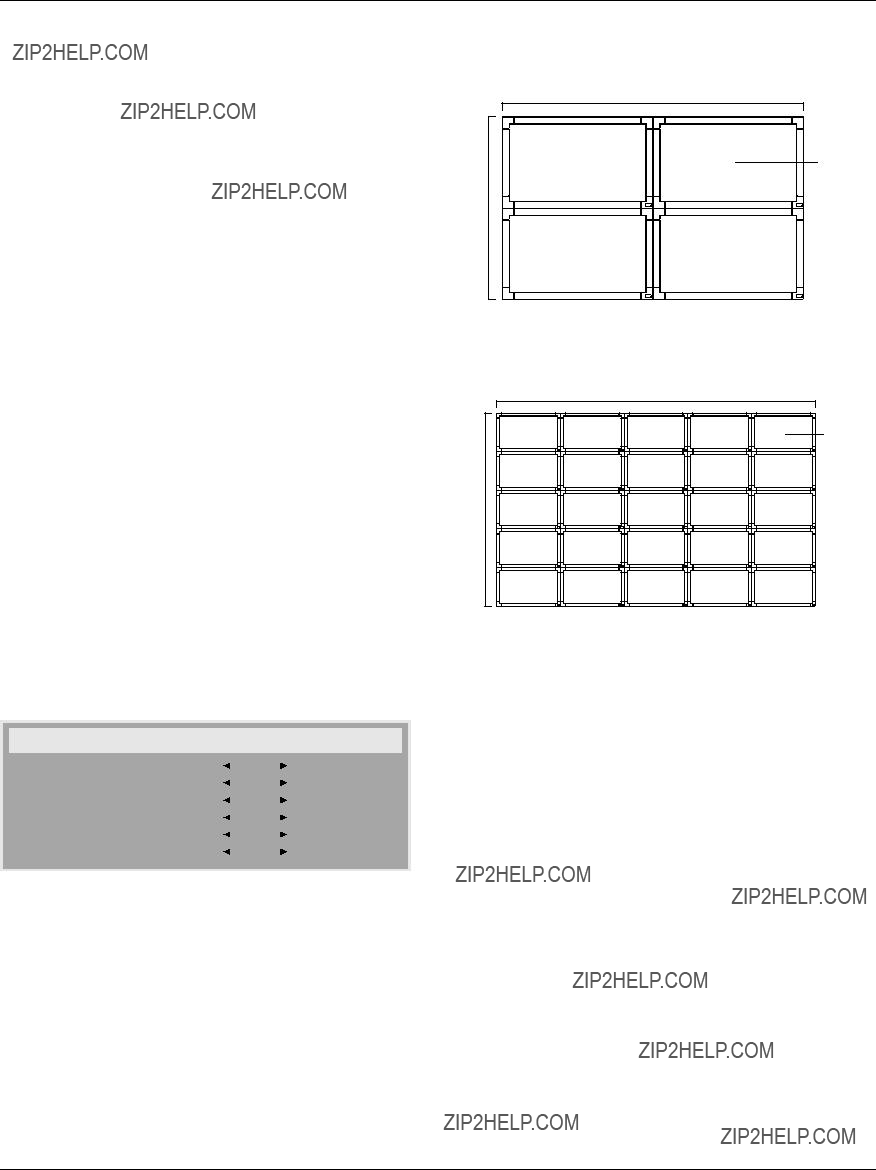
BDL3245E / BDL4245E / BDL4645E
Film mode
Choose to turn on or off the film mode frame conversion function.
???{Auto} - Enable the film mode frame conversion function for movies and motion pictures.The display converts a 24
???{Off} - Disable the film mode frame conversion function.This mode is suitable for TV broadcasting and VCR signals.
IR control
Select the operation mode of the remote control when multiple displays are connected via the RS232C connection.
???{Normal} - All displays can be operated normally by the remote control unit.
???{Primary} - Designate this display as the primary display for remote control operation. Only this display can be operated by the remote control.
???{Secondary} - Designate this display as the secondary display.This display can not be operated by the remote control, and will only receive the control signal from the primary display via the RS232C connection.
???{Lock All} / {Lock all but Volume} / {Lock all but Power} - Lock the remote control function of this display.To unlock, press and hold the [DISPLAY] button on the remote control for 5 (five) seconds..
Keyboard control
Choose to enable or disable the display keyboard (control buttons) function.
???{Lock} - Disable the keyboard function.
??? {Lock All} / {Lock all but Volume} / {Lock all but Power} - Disable
???the keyboard function.
Tiling
With this function you can create a single
Tiling
Example: 2 x 2 screen matrix (4 displays)
H monitors = 2 displays
V monitors = 2 displays
Example: 5 x 5 screen matrix (25 displays)
H monitors = 5 displays
V monitors = 5 displays
H monitors
???H monitors - Select the number of displays on the horizontal side.
???V monitors - Select the number of displays on the vertical side.
???Position - Select the position of this display in the screen matrix.
???Frame comp. - Choose to turn the frame compensation function on or off. If turned on, the display will adjust the image to compensate for the width of the display bezels in order to accurately display the
image.
20
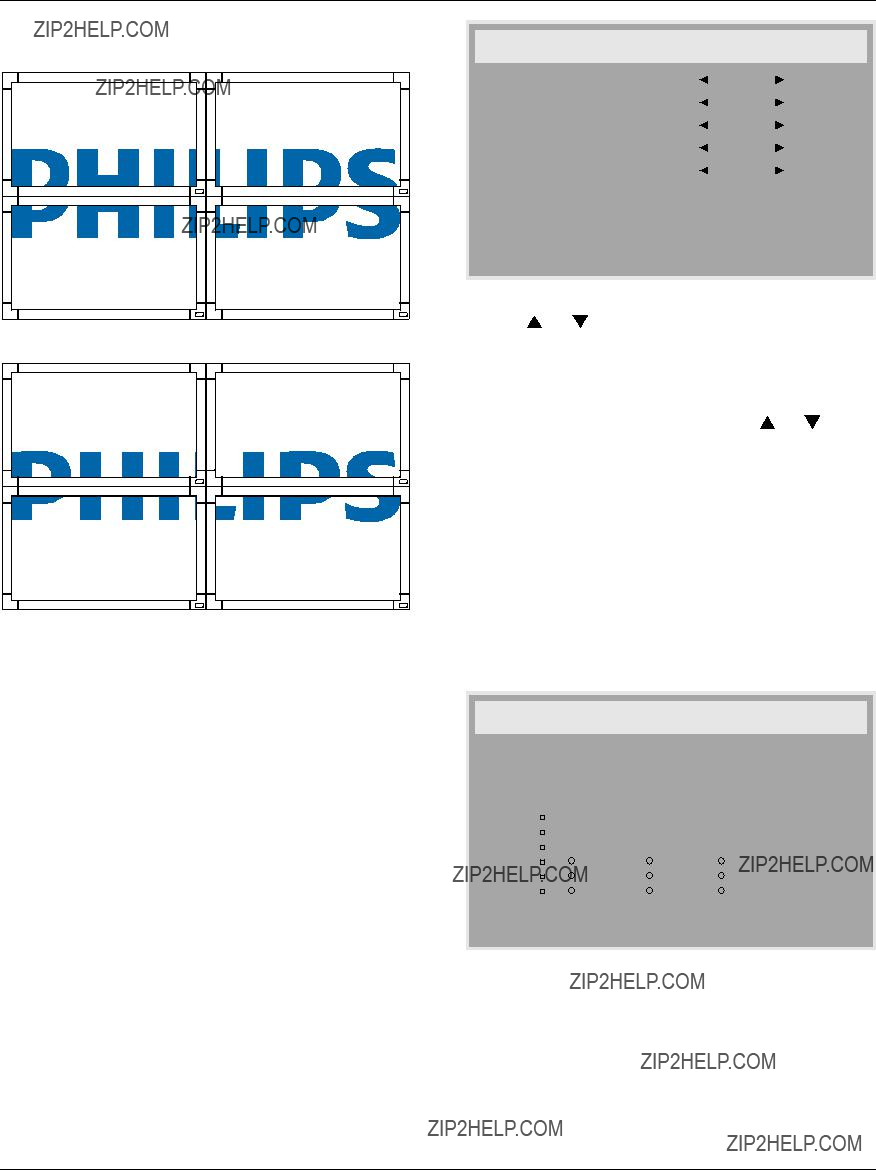
BDL3245E / BDL4245E / BDL4645E
???
Frame comp. - Off
Frame comp. - On
???Enable: Choose to enable or disable the Tiling function. If enabled, the display will apply the settings in {H monitors}, {V monitors}, {Position}, and {Frame comp.}.
???Switch on delay: Set the
NOTE: The Tiling function will be disabled when the [ON/OFF] button for PIP is pressed.
Heat status
This function allows you to check the thermal status of the display at any time.
Date and time
Adjust the current date and time for the display???s internal clock.
Date and time
to adjust.
Schedule
This function allows you to program up to 7 (seven) different scheduled time intervals for the display to activate.
You can select:
???The time for the display to turn on and turn off.
???The days in a week for the display to activate.
???Which input source the display will use for each scheduled activation period.
NOTE: You should set up current date and time in {Date and time} menu before using this function.
1.Press [SET] or [ ] button to enter the submenu.
] button to enter the submenu.
Schedule
2.Press [ ] or [
] or [ ] button to select a schedule item (item number 1 ~ 7), and then press [
] button to select a schedule item (item number 1 ~ 7), and then press [ ] button to mark it the item number.
] button to mark it the item number.
21

BDL3245E / BDL4245E / BDL4645E
Schedule
3. Press [ ] or [ ] button to select the schedule:
] or [ ] button to select the schedule:
1
and minute for the display to turn off.
Select or leave an empty ???__??? for both the hour and minute slot if you do not want to use this
input source. If no input source is selected, the input source will remain the same as last selected.
4Date schedule: Press [ ] button to select which day in a week this schedule item will be take effect, and then press the [SET] button.
] button to select which day in a week this schedule item will be take effect, and then press the [SET] button.
4.For more schedule settings, press [EXIT] button and then repeat the steps above. A check mark in the box next to the number of the schedule item indicates that the selected schedule is in effect.
NOTES:
???The {Every day} selection in a schedule item takes priority over the other weekly schedules.
???If the schedule overlap, the scheduled
???If there are two schedule items programmed for the same time, the highest numbered schedule takes priority. For example, if schedule items #1 and #2 both set the display to power on at 7:00 AM and off at 5:00 PM, then only schedule item # 1 will take effect.
Monitor ID
Set the ID number for controlling the display via the RS232C connection. Each display must have a unique ID number when multiple sets of this display are connected.
DDC/CI
Choose to turn on or off the DDC/CI communication function. Select {On} for normal use.
Smart power
Set the display to reduce the power consumption automatically. The options are: {Off} / {Medium} / {High}.
Auto signal detection
Choose to let the display detect and display available signal sources automatically.
???{On} - Set the display to display the image automatically once a signal is connected.
???{Off} - Once a signal is connected, it can only be selected manually.
OPS settings
Set the OPS configuration under each power condition..
???{Auto} - After selecting {Card OPS} for video source input, the OPS will be set to off when the display power is set to off, or set to on when the display power is set to on.When set to other video source inputs, the OPS will always be set to on.
???{Always off} - The OPS will always be set to off.
???{Always on} - The OPS will always be set to on.
Advanced option reset
Reset all settings in the Advanced option menu to factory preset values. 1. Press [SET] or [ ] button to enter the submenu.
] button to enter the submenu.
2. Press [ ] or [ ] button to select {Reset} and press the [SET] button to restore settings to factory preset values.
] or [ ] button to select {Reset} and press the [SET] button to restore settings to factory preset values.
3.Press the [EXIT] button or select {Cancel} and press the [SET] button to cancel and then return to the previous menu.
22

BDL3245E / BDL4245E / BDL4645E
5.Input Mode
VGA Resolution:
SDTV Resolution:
HDTV Resolution:
???The PC text quality is optimum in HD 1080 mode (1920 x 1080, 60Hz).
???Your PC display screen might appear different depending on the manufacture (and your particular version of Windows).
???Check your PC instruction book for information about connecting your PC to a monitor.
???If a vertical and horizontal
???When horizontal synchronous signals seem irregular in RGB mode, check PC power saving mode or cable connections.
???The display settings table complies to the IBM/VESA standards, and based on the analog input.
???The DVI support mode is regarded as same to the PC support mode.
???The best timing for the vertical frequency to each mode is 60Hz.
23
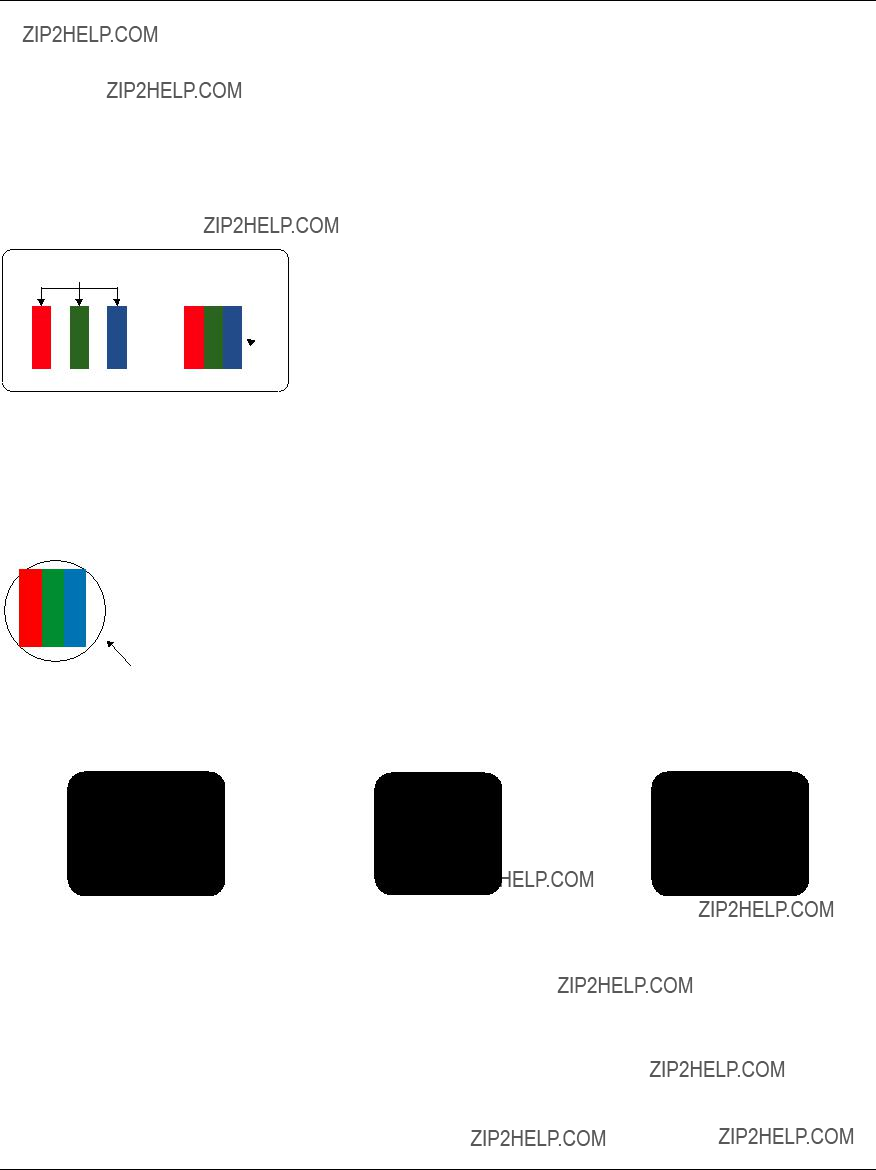
BDL3245E / BDL4245E / BDL4645E
6.Pixel Defect Policy
We strive to deliver the highest quality products and use some of the industry???s most advanced manufacturing processes whilst practicing stringent quality control. However, pixel or
This notice explains the different types of pixel defects and defines the acceptable defect level for the BDL4230E LCD screen. In order to qualify for repair under warranty, the number of pixel defects must exceed a certain level as shown in the reference table. If the LCD screen is within specification a warranty exchange / claim back will be refused. Additionally, because some types or combinations of pixel defects are more noticeable than others, Philips sets even higher quality standards for those.
6.1.Pixels and
subpixel
pixel
A pixel, or picture element, is composed of three
6.2.Types of Pixel Defects + Dot Definition
Pixel and
Dot definition = What is a defective ???Dot???? :
One or more defective, adjacent
R G B
One dot = One Pixel; consists of three
6.3.Bright Dot Defects
Bright dot defects appear as pixels or
24

BDL3245E / BDL4245E / BDL4645E
6.4.Dark Dot Defects
Black dot defects appear as pixels or
6.5.Proximity of Pixel Defects
Because pixel and
???Allowed amount of adjacent dark dots = (adjacent dark dots =1 pair of dark dots)
???Minimum distance between dark dots
???Total no. of all defective dots
6.6.Pixel Defect Tolerances
In order to qualify for repair due to pixel defects during the warranty period, a PDP / TFT panel in a Philips Plasma / LCD- display must have pixel or sub- pixel defects exceeding the tolerances listed in the following table.
6.7.MURA
Dark spots or patches may occasionally appear on some liquid crystal display (LCD) panels.This is known within the industry as Mura, which is a Japanese term for ???unevenness.??? It is used to describe an irregular pattern or area in which uneven screen uniformity appears under certain conditions. Mura is a result of the deterioration of the liquid crystal alignment layer and is most commonly caused by
Mura has been around since the introduction of LCD technology and with screens getting bigger and in operation 24/7, many displays are running in low light conditions.This all adds to the possibility of Mura affecting displays.
HOW TO SPOT MURA
There are many symptoms of Mura and also multiple causes. Several of these are listed below:
???Impurities or foreign particles in the crystal matrix
???Uneven distribution of LCD matrix during manufacturing
???
???Panel assembly induced stress
???Flaws within the LCD cells
???Thermal induced stress - high temperature operation over long periods of time
HOW TO AVOID MURA
Although we can not guarantee the complete eradication of Mura every time, in general the appearance of Mura can be minimized by these methods:
???Lower the backlight brightness
???Use a screen saver
???Reduce the ambient temperature around the unit
25
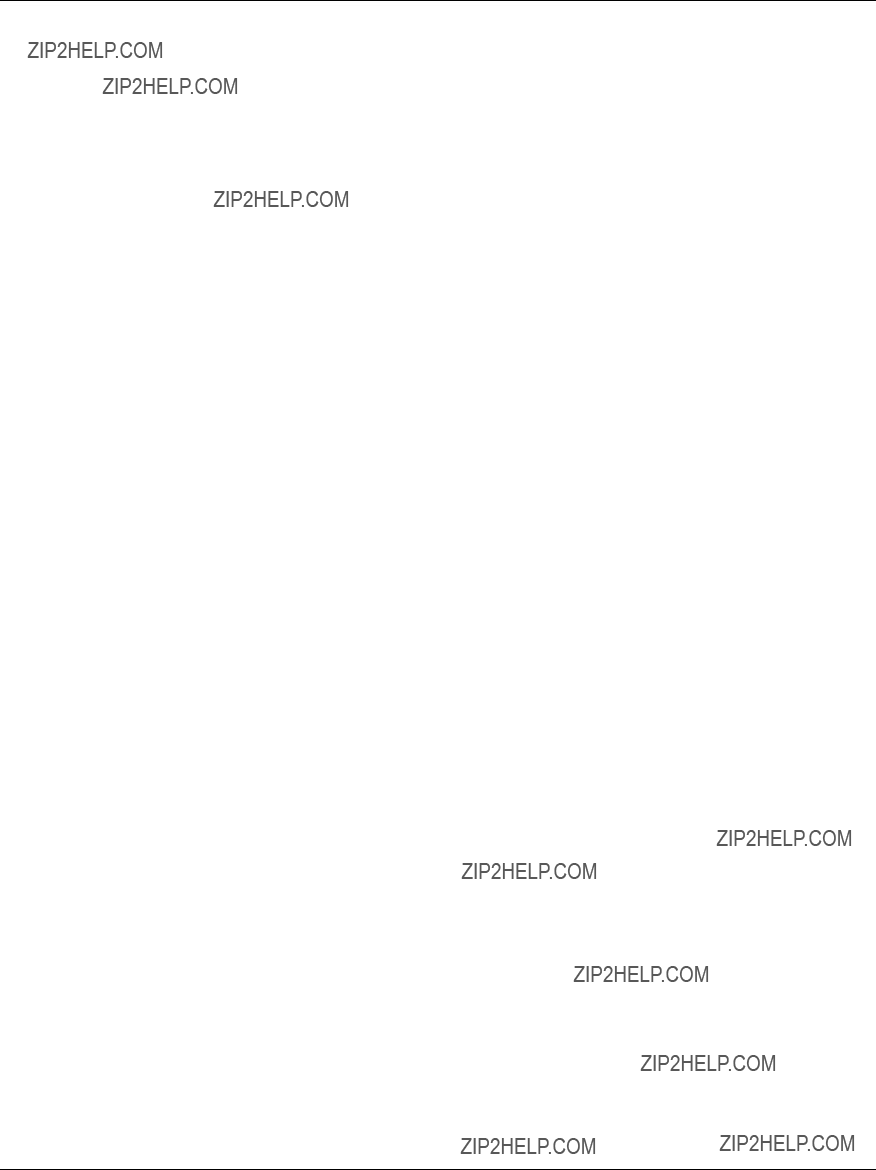
BDL3245E / BDL4245E / BDL4645E
7.Cleaning and Troubleshooting
7.1.Cleaning
Caution When Using the Display
???Do not bring your hands, face or objects close to the ventilation holes of the display.The top of the display is usually very hot due to the high temperature of exhaust air being released through the ventilation holes. Burns or personal injuries may occur if any body parts are brought too
close. Placing any object near the top of the display could also result in heat related damage to the object as well as the display itself.
???Be sure to disconnect all cables before moving the display. Moving the display with its cables attached may damage the cables and thus cause fire or electric shock.
???Disconnect the power plug from the wall outlet as a safety precaution before carrying out any type of cleaning or maintenance procedure.
Front Panel Cleaning Instructions
???The front of the display has been specially treated.Wipe the surface gently using only a cleaning cloth or a soft,
???If the surface becomes dirty, soak a soft,
???Do not scratch or hit the surface of the panel with fingers or hard objects of any kind.
???Do not use volatile substances such as insert sprays, solvents and thinners.
Cabinet Cleaning Instructions
???If the cabinet becomes dirty, wipe the cabinet with a soft, dry cloth.
???If the cabinet is extremely dirty, soak a
???Do not allow any water or detergent to come into contact with the surface of the display. If water or moisture gets inside the unit, operating problems, electrical and shock hazards may result.
???Do not scratch or hit the cabinet with fingers or hard objects of any kind.
???Do not use volatile substances such as insert sprays, solvents and thinners on the cabinet.
???Do not place anything made from rubber or PVC near the cabinet for any extended periods of time.
26

27
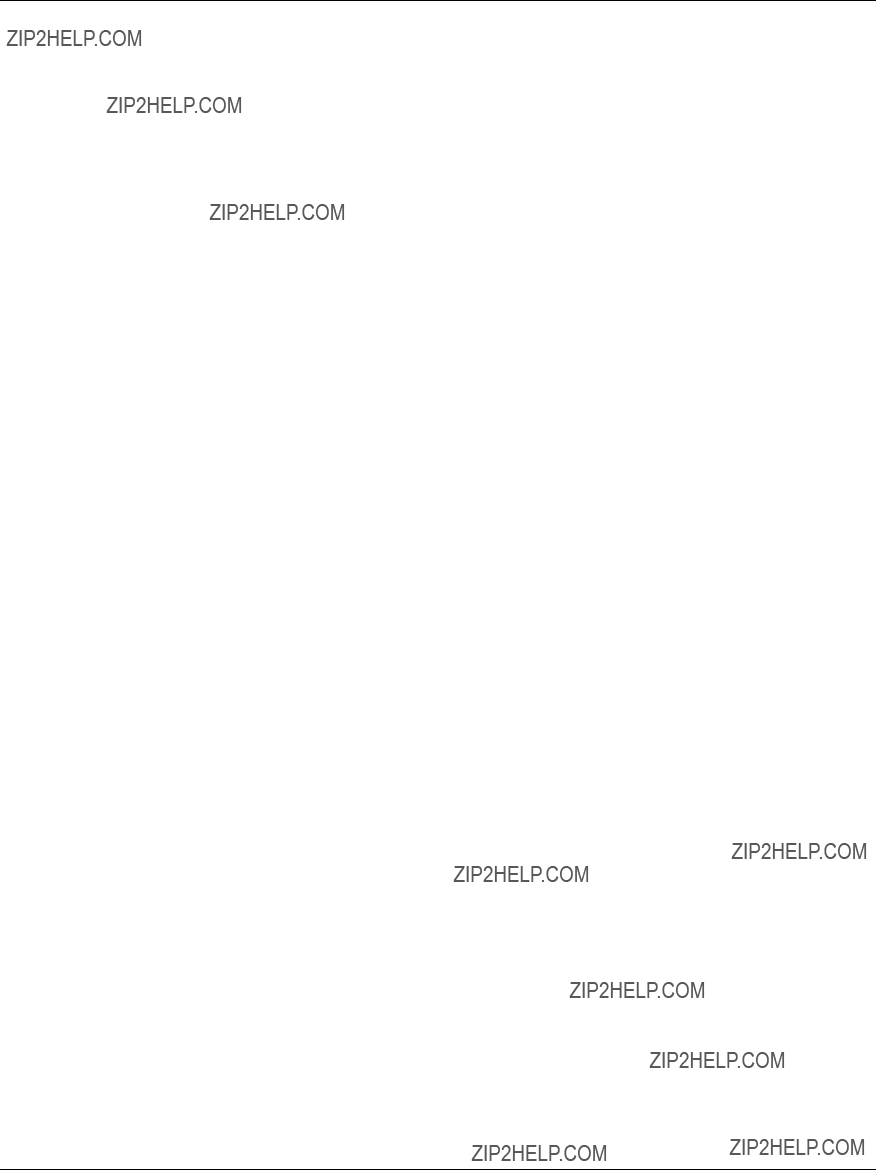
BDL3245E / BDL4245E / BDL4645E
8.Technical Specifications
BDL3245E
Display:
In/Out Terminals:
General:
28
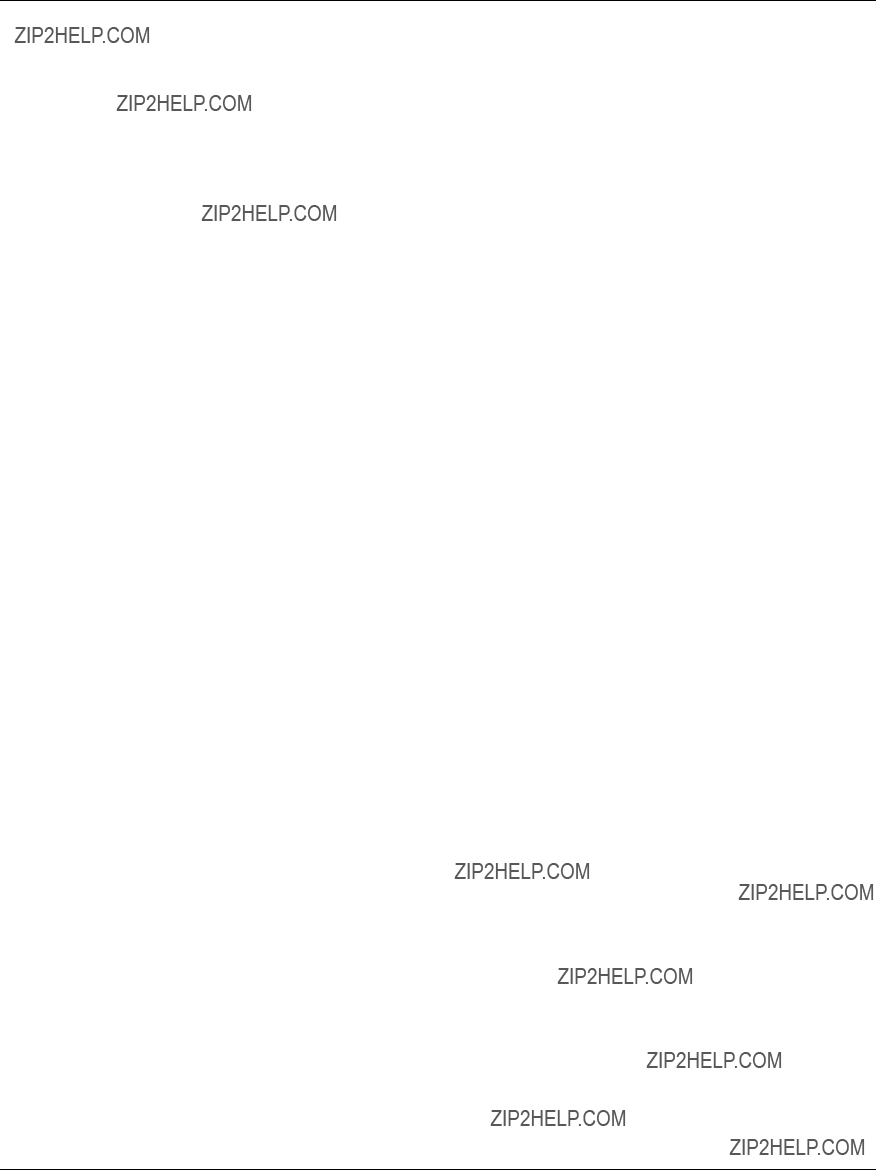
BDL3245E / BDL4245E / BDL4645E
Environmental Condition:
Internal Speaker:
29
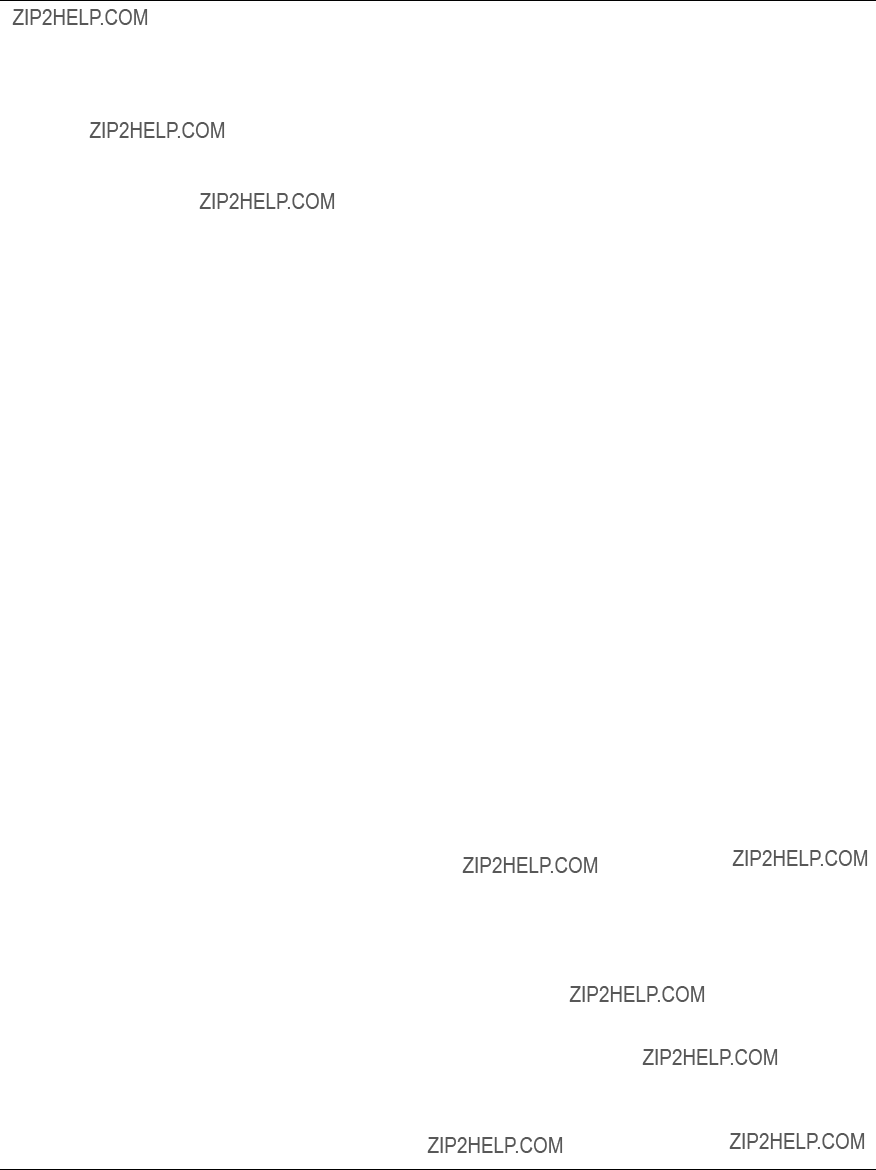
BDL3245E / BDL4245E / BDL4645E
BDL4245E
Display:
In/Out Terminals:
General:
30
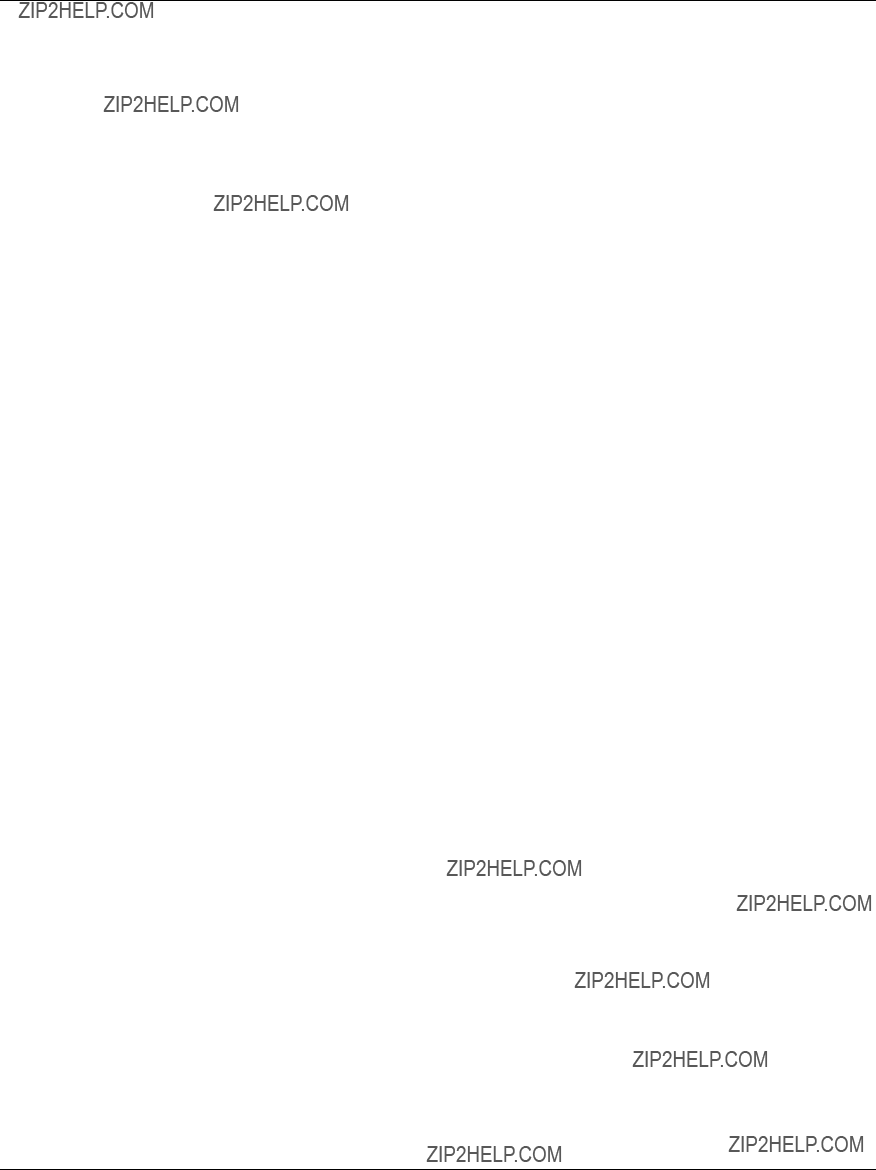
BDL3245E / BDL4245E / BDL4645E
Environmental Condition:
Internal Speaker:
31
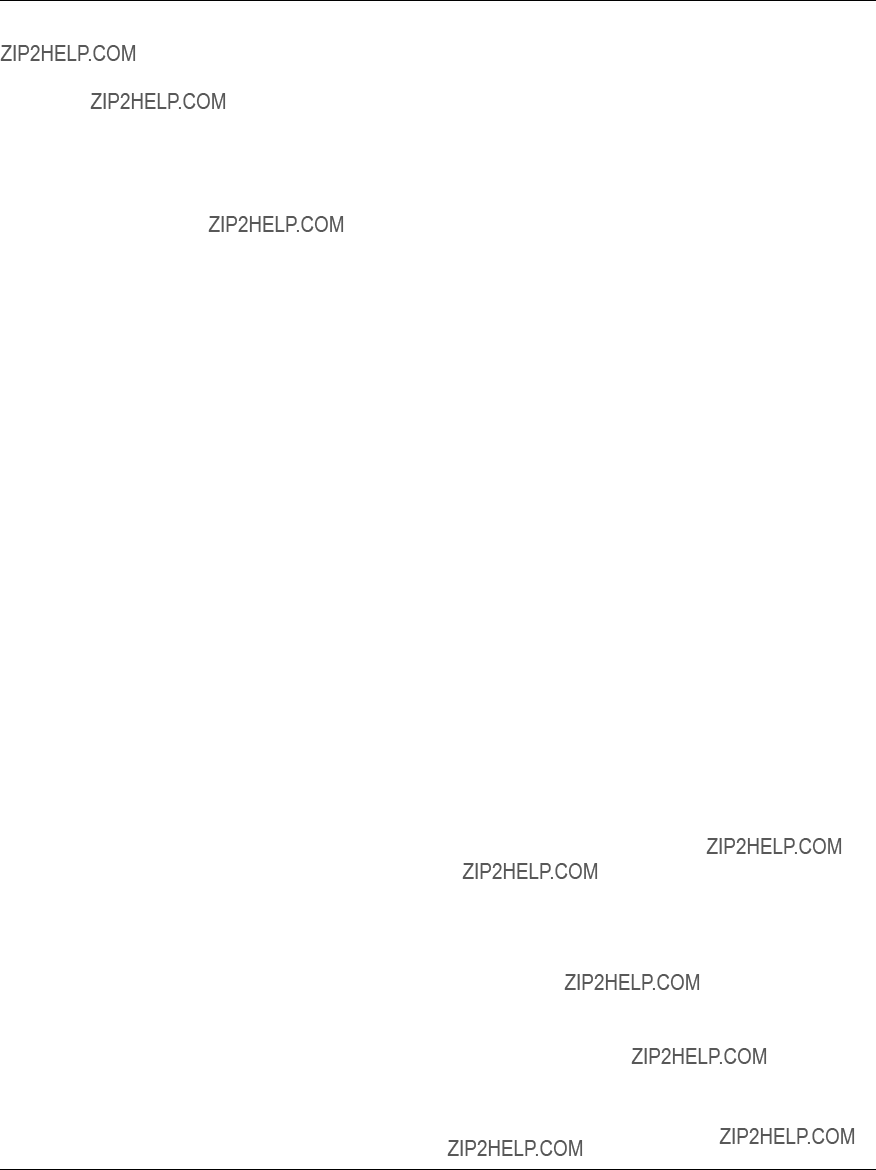
BDL3245E / BDL4245E / BDL4645E
BDL4645E
Display:
In/Out Terminals:
General:
32
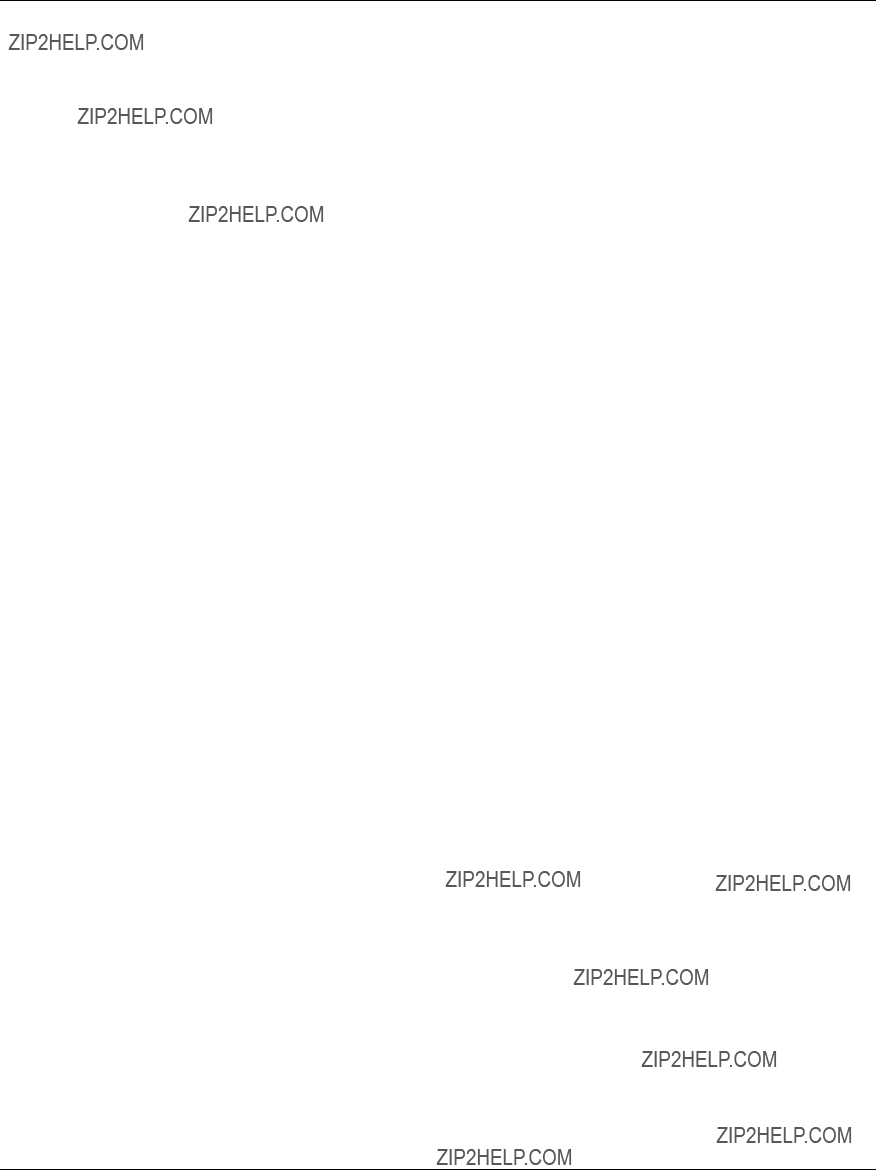
BDL3245E / BDL4245E / BDL4645E
Environmental Condition:
Internal Speaker:
33

2011 ?? Koninklijke Philips Electronics N.V. All rights reserved.
Philips and the Philips Shield Emblem are registered trademarks of Koninklijke Philips Electronics N.V. and are used under license from Koninklijke Philips Electronics N.V.
Specifications are subject to change without notice.